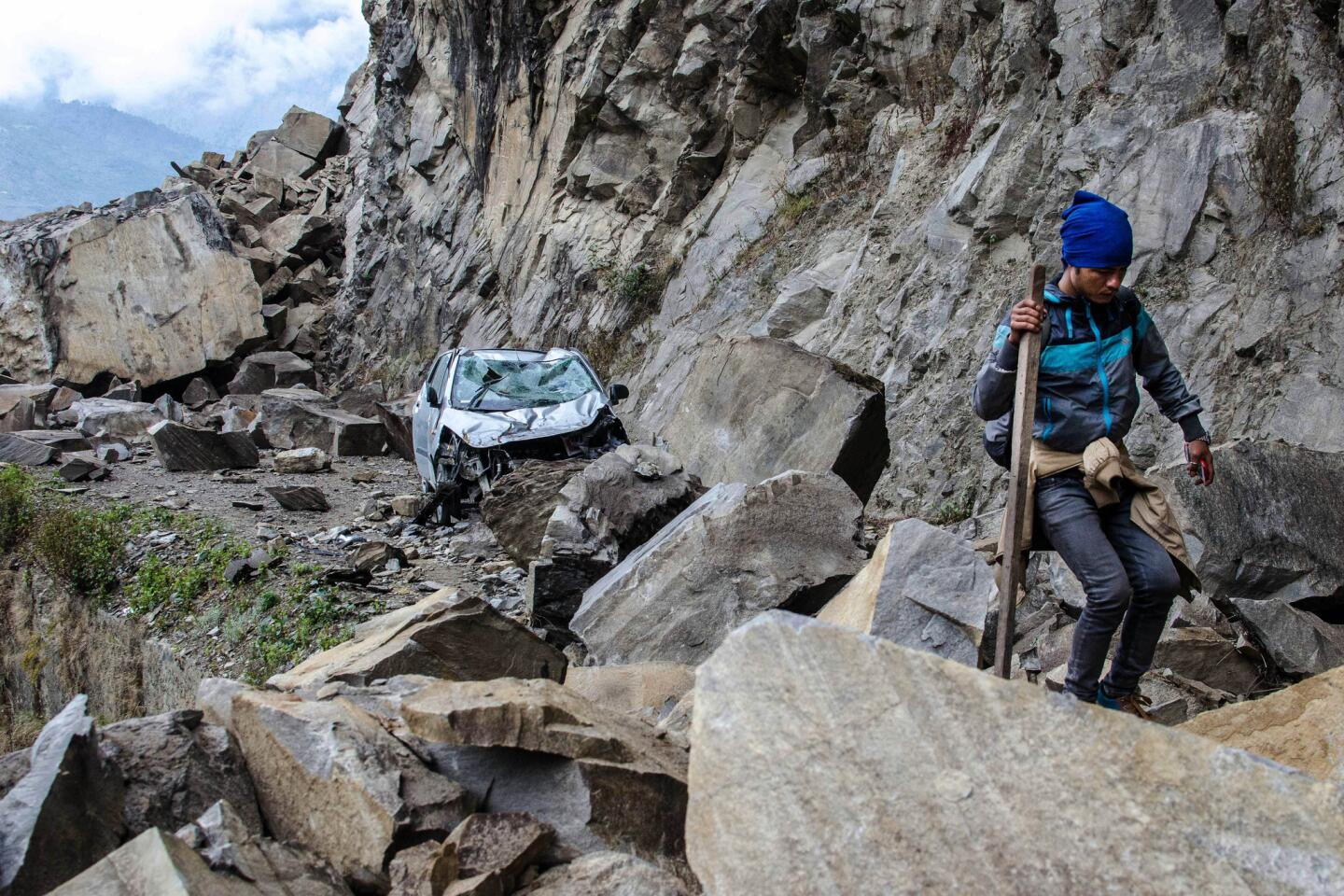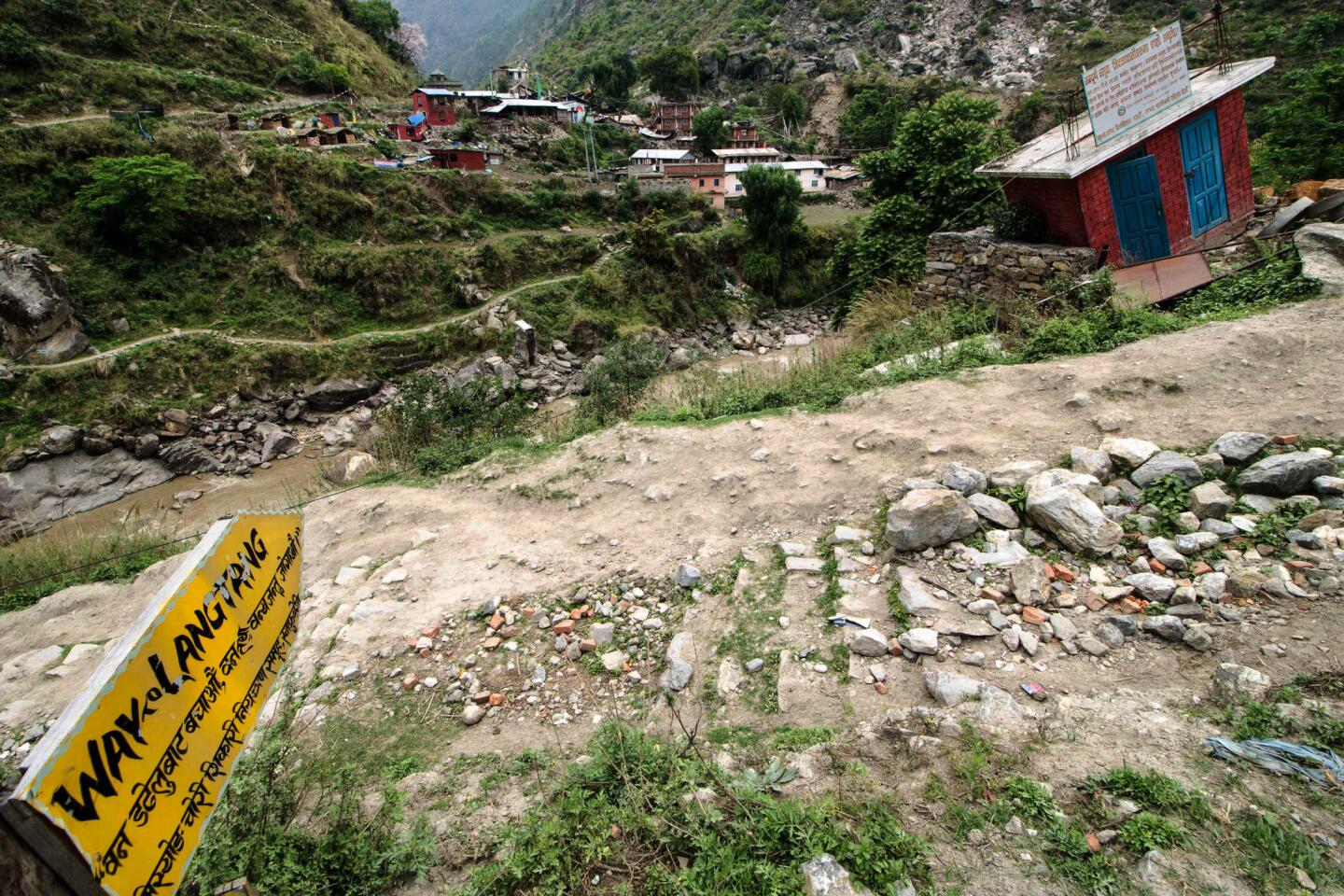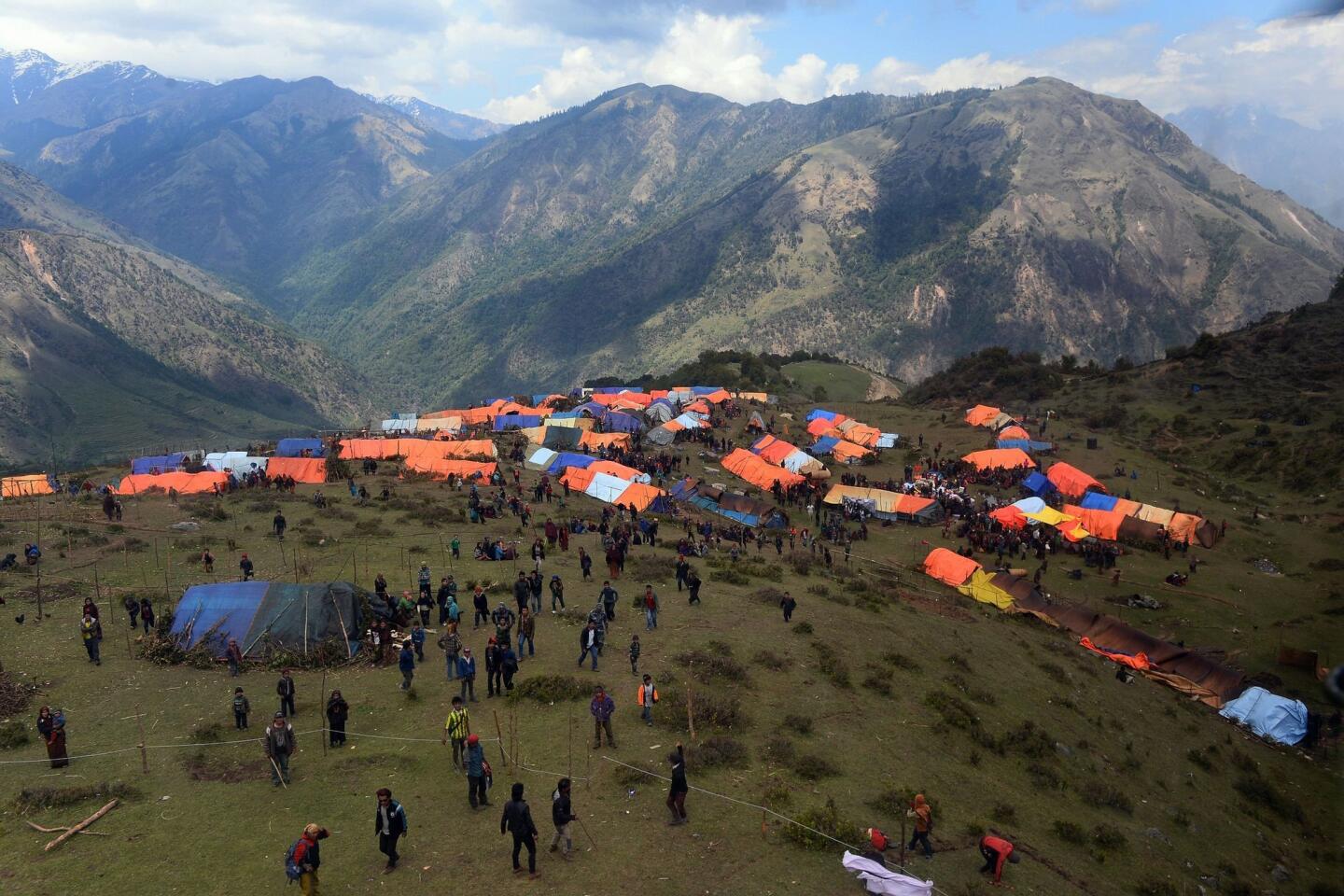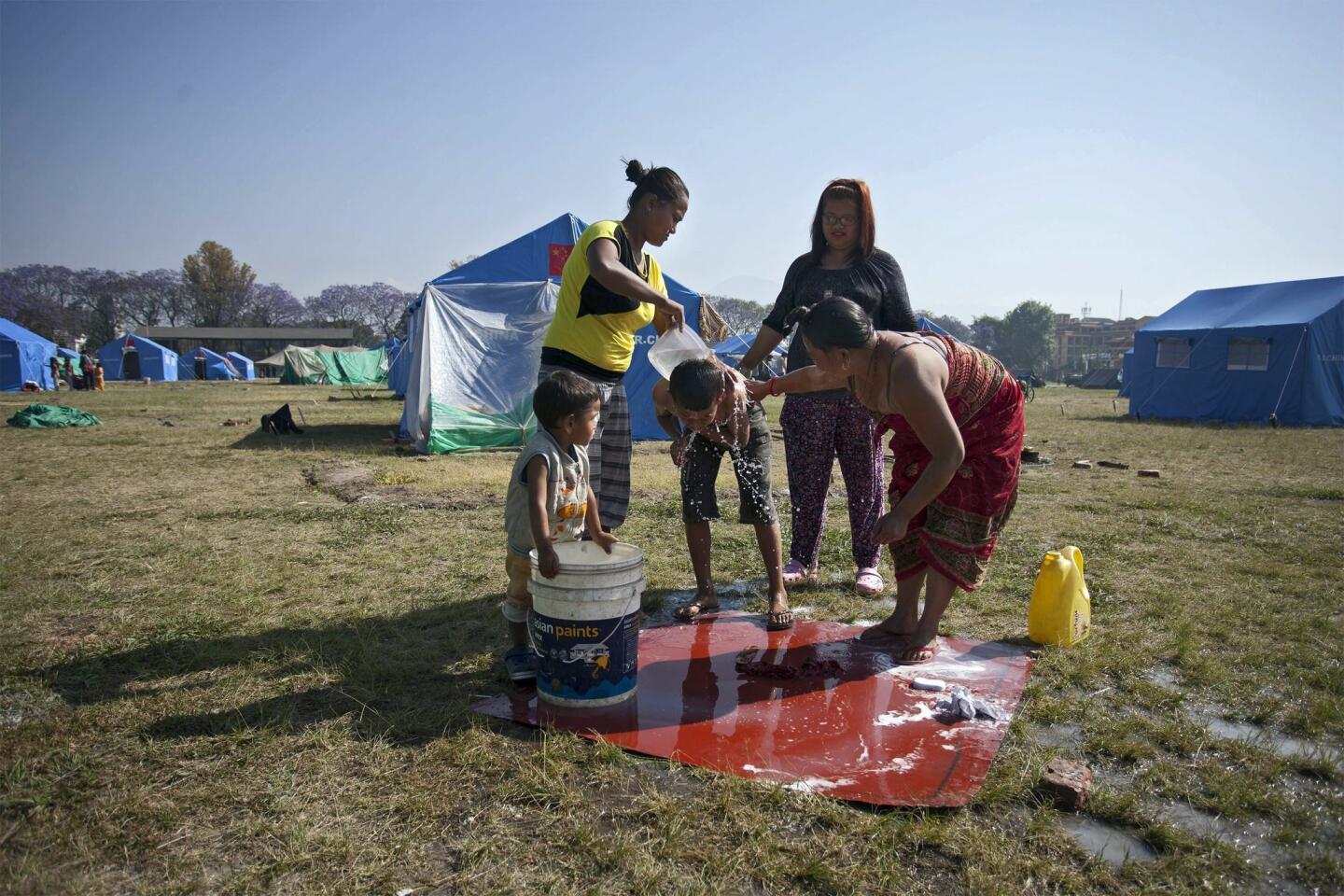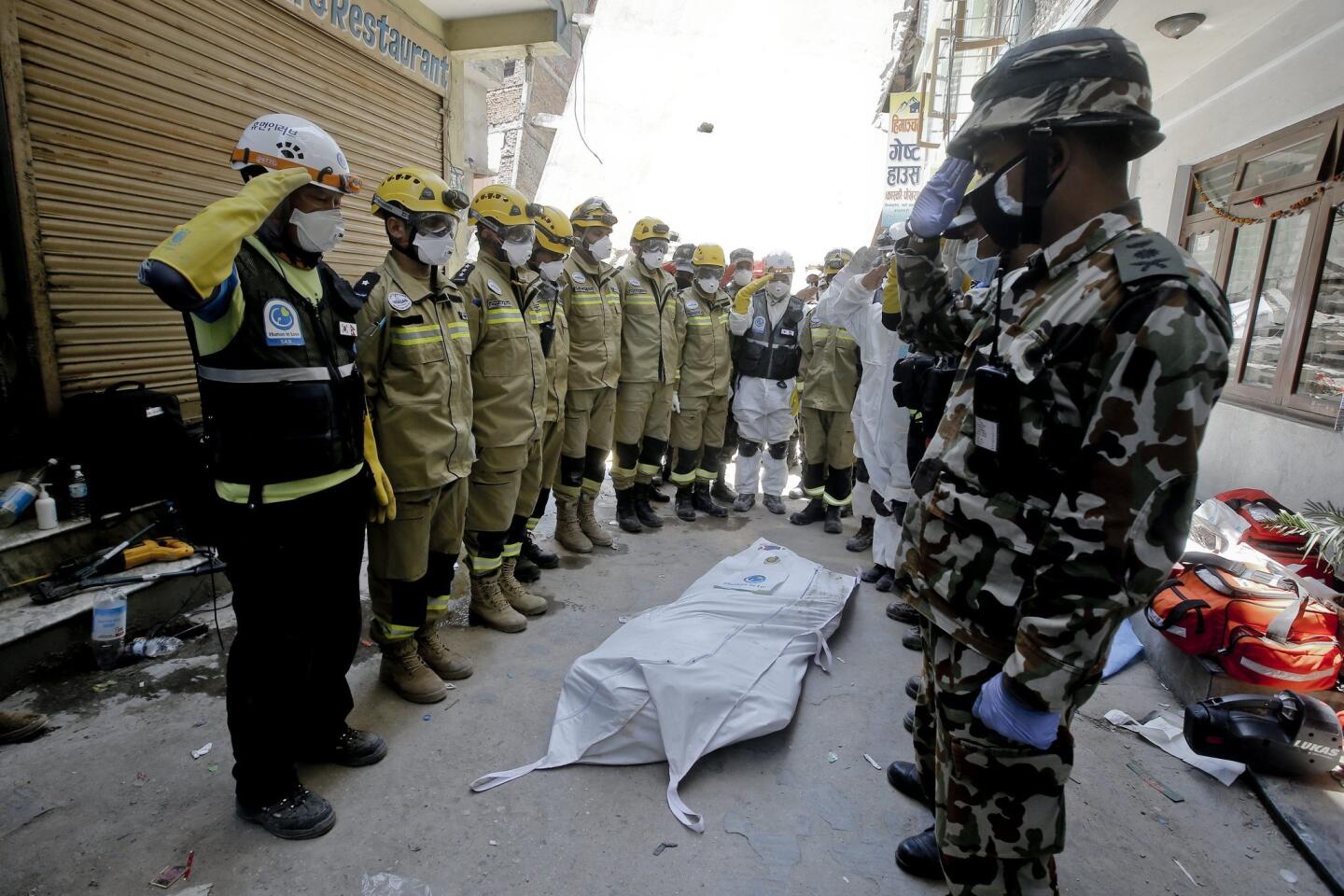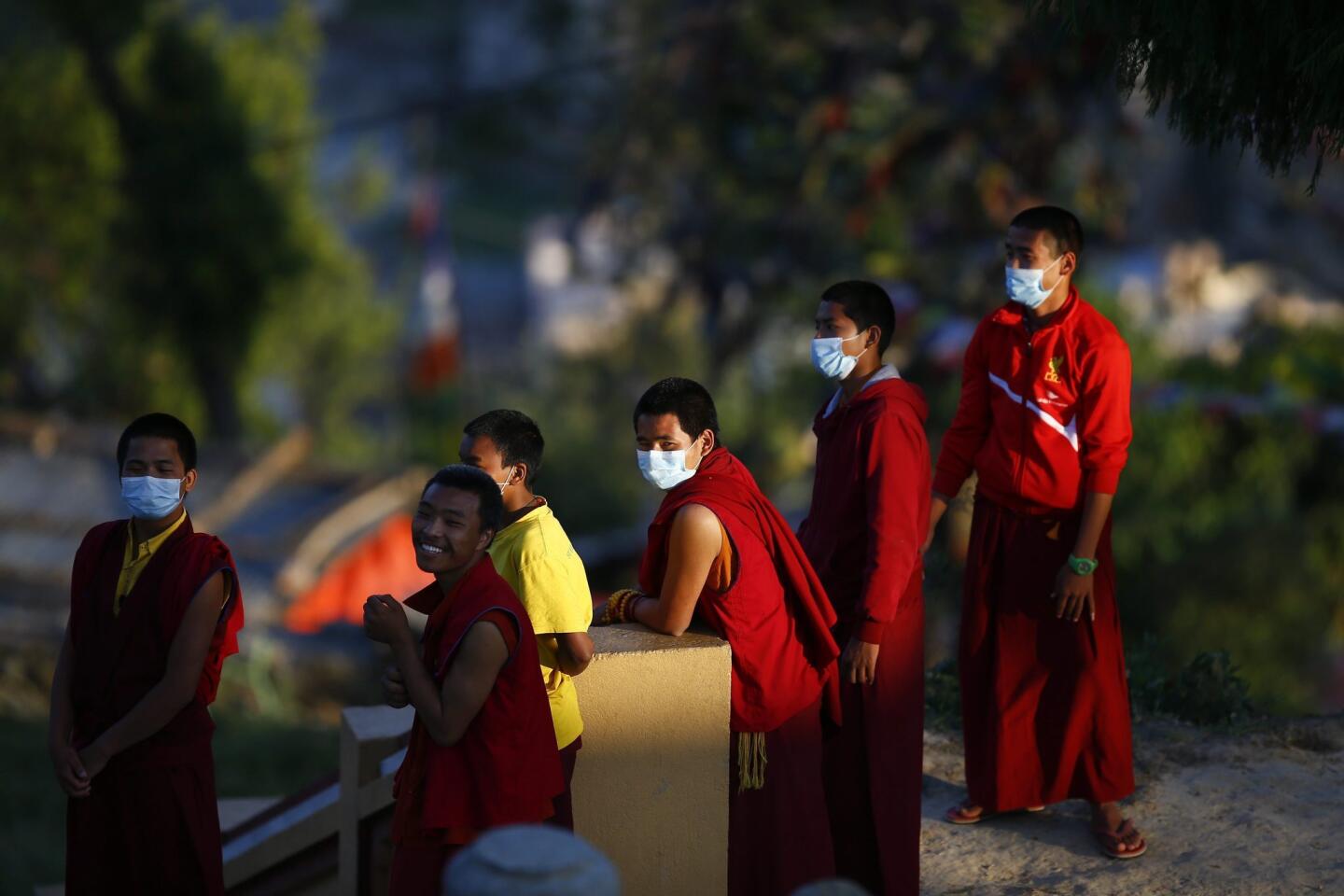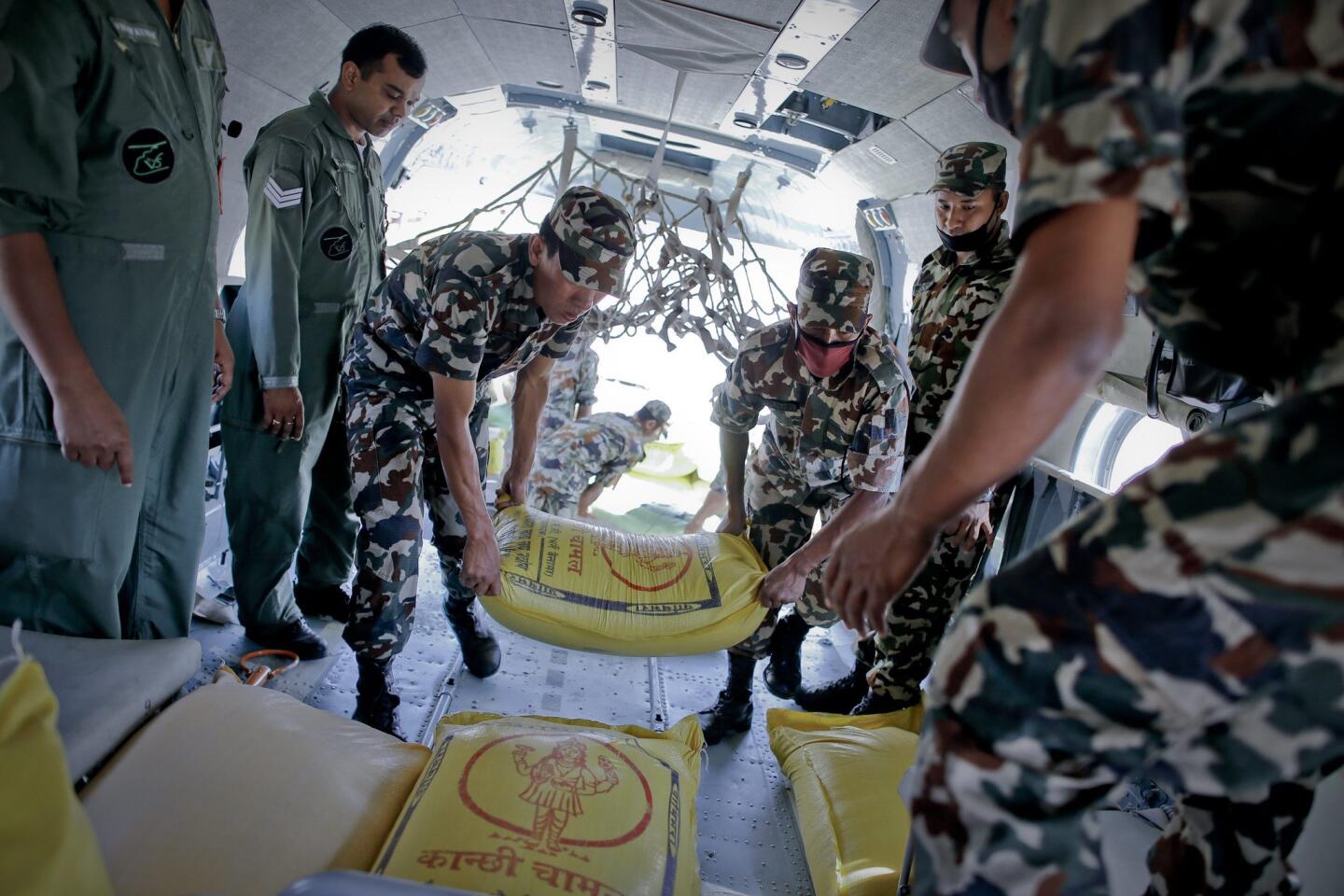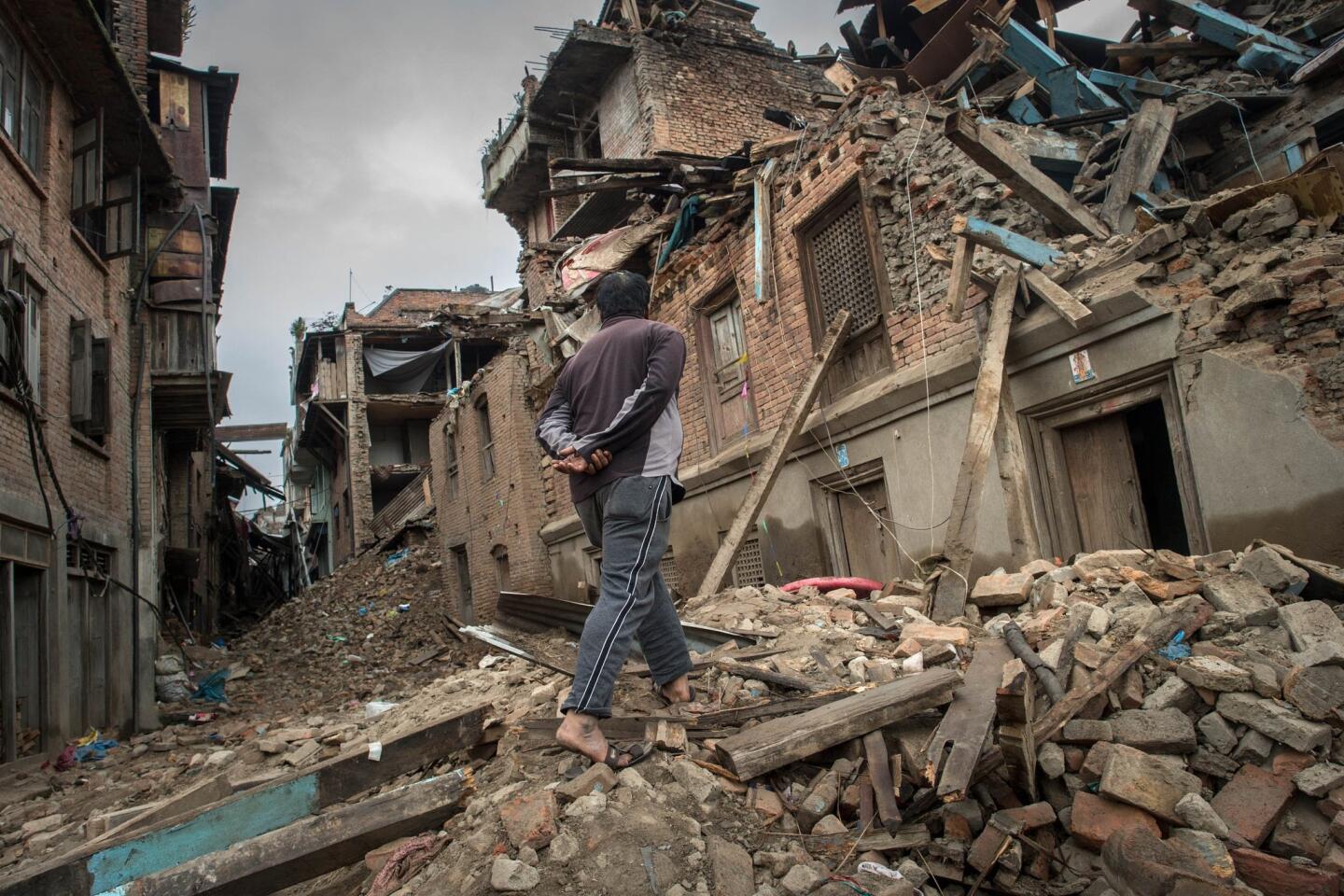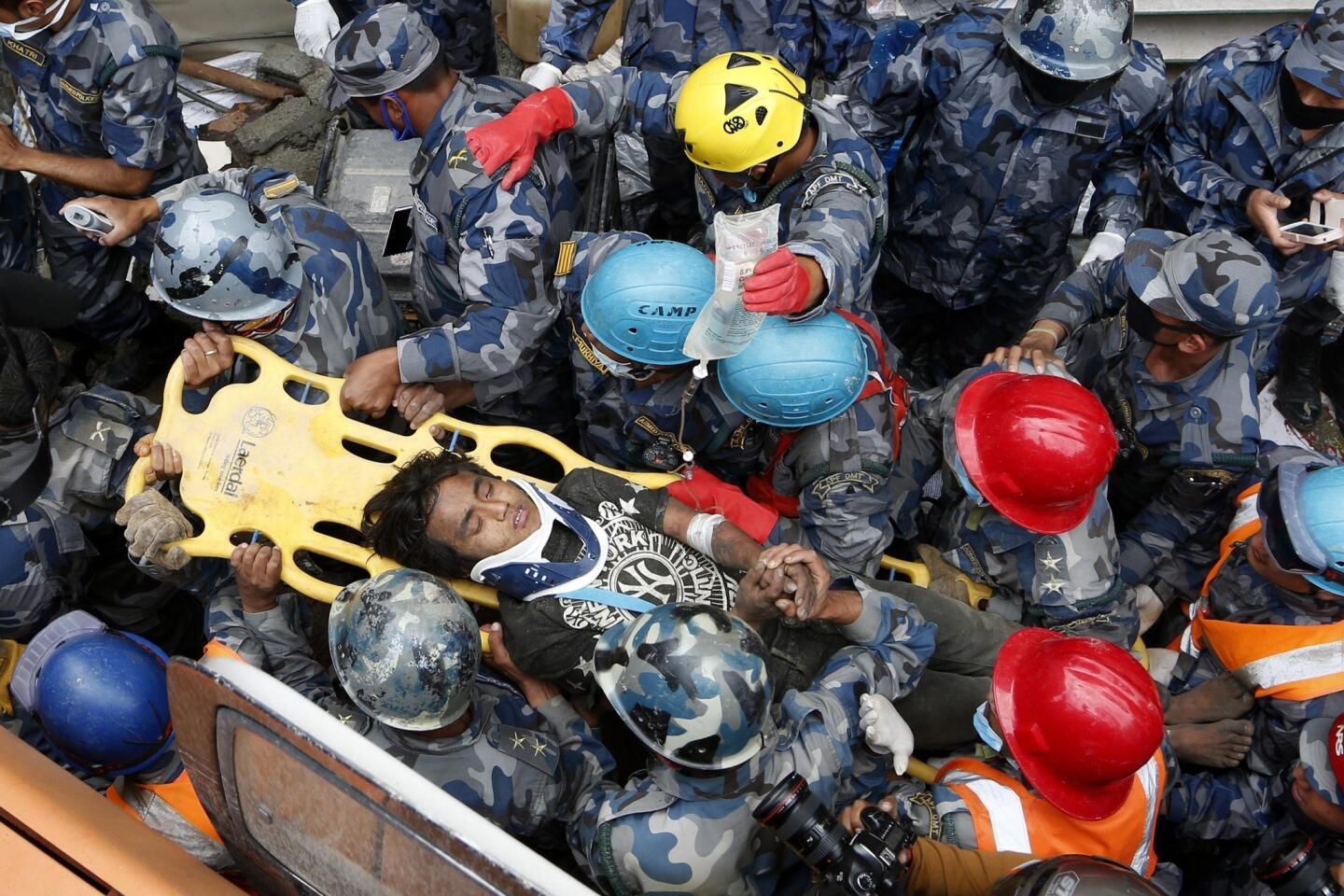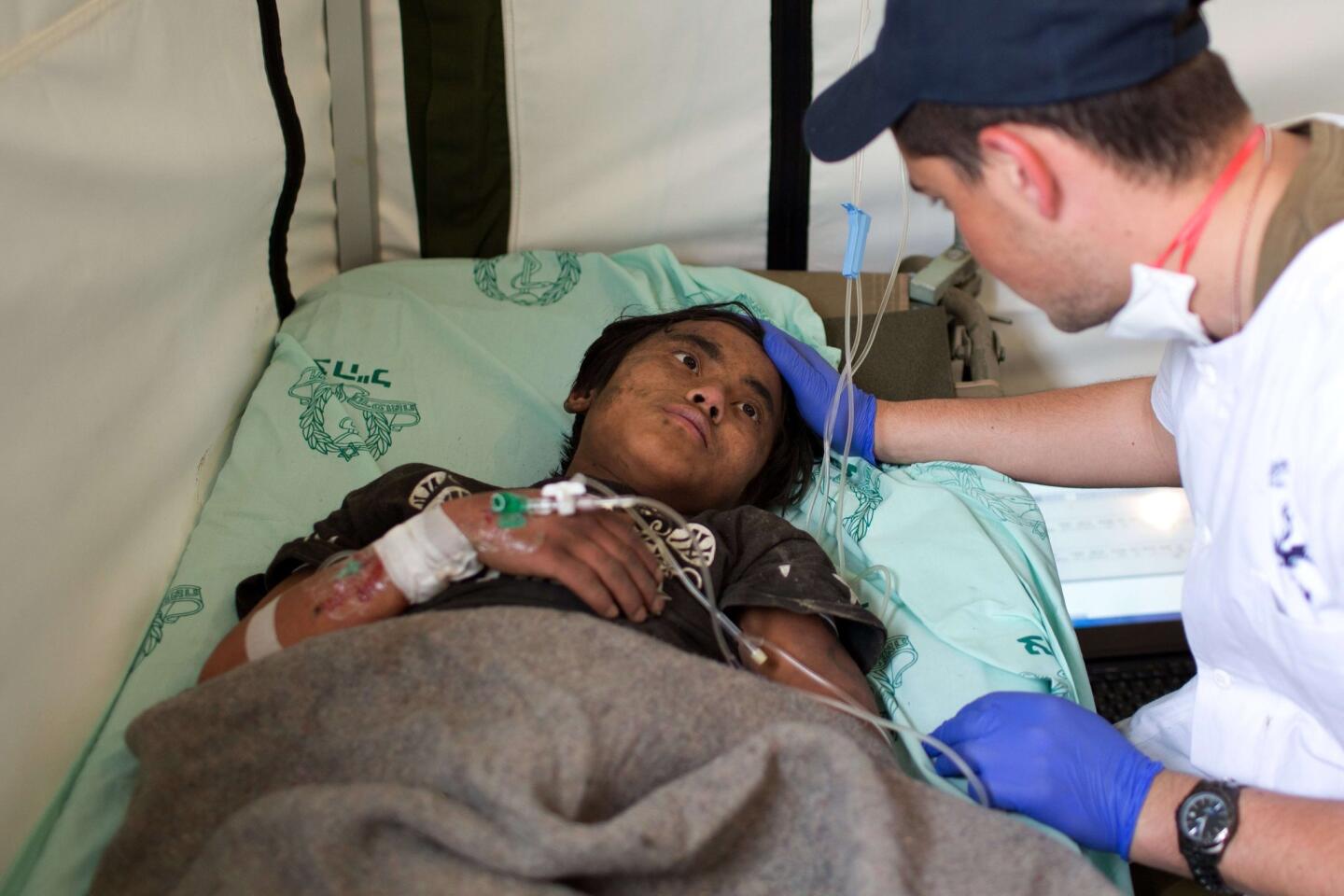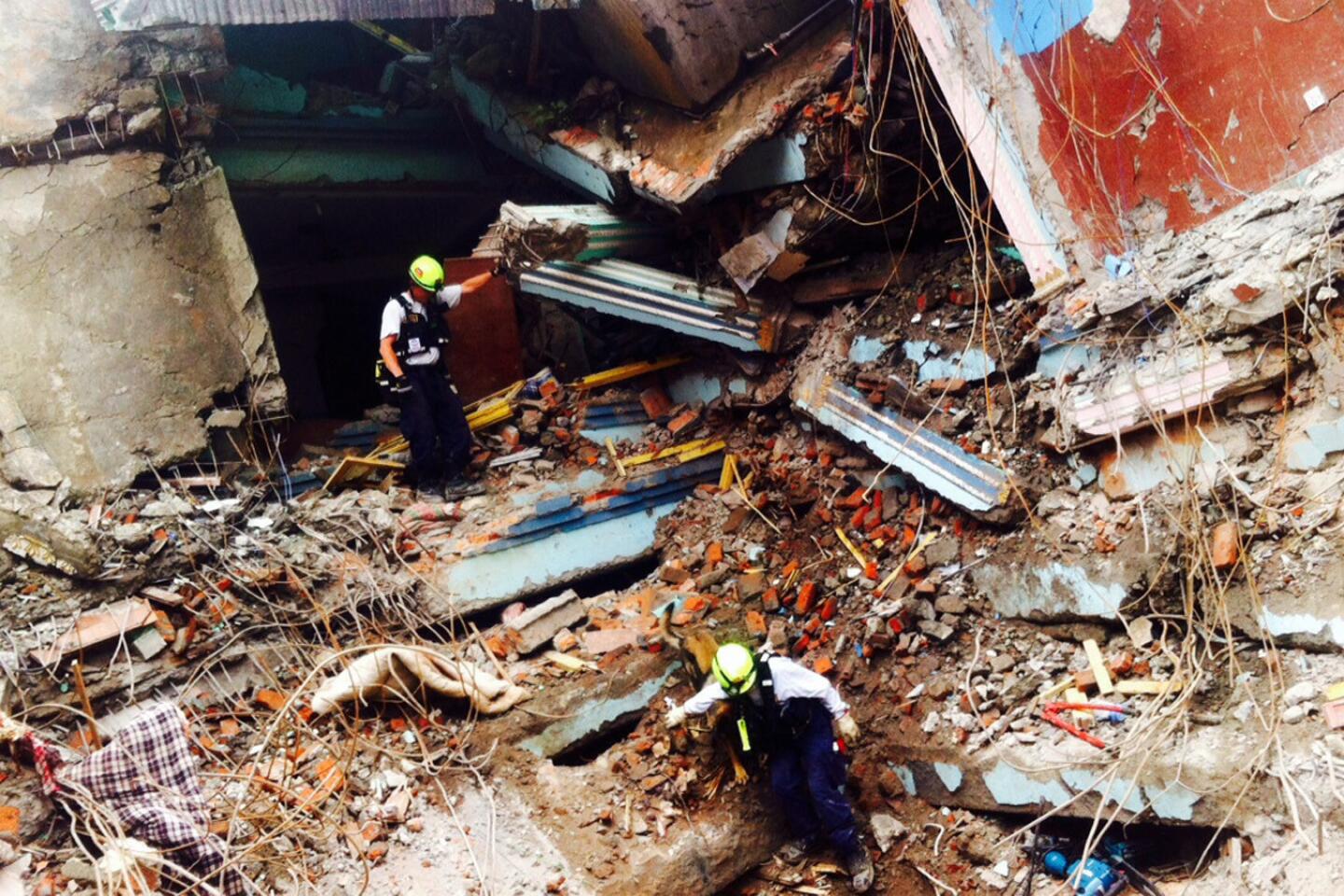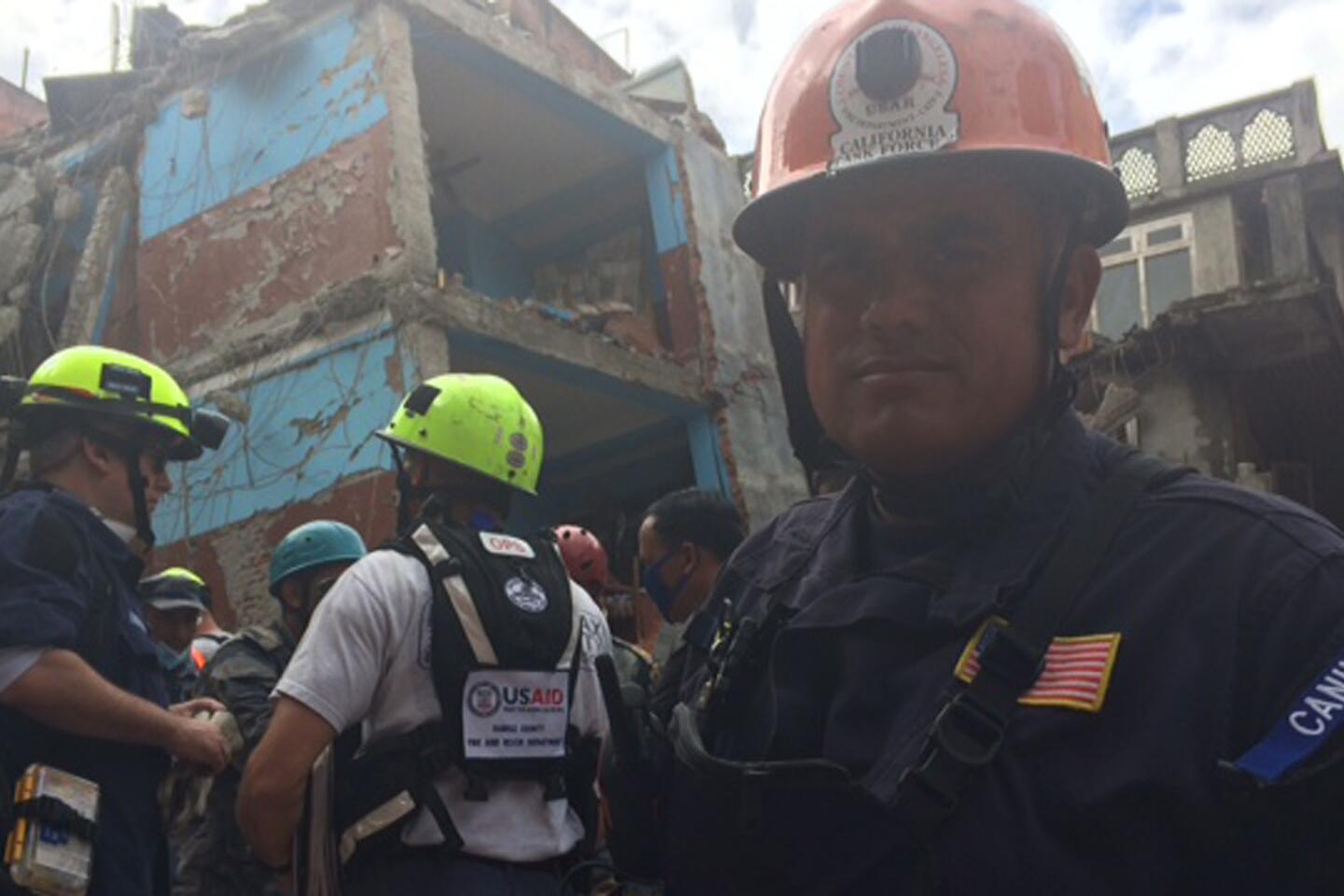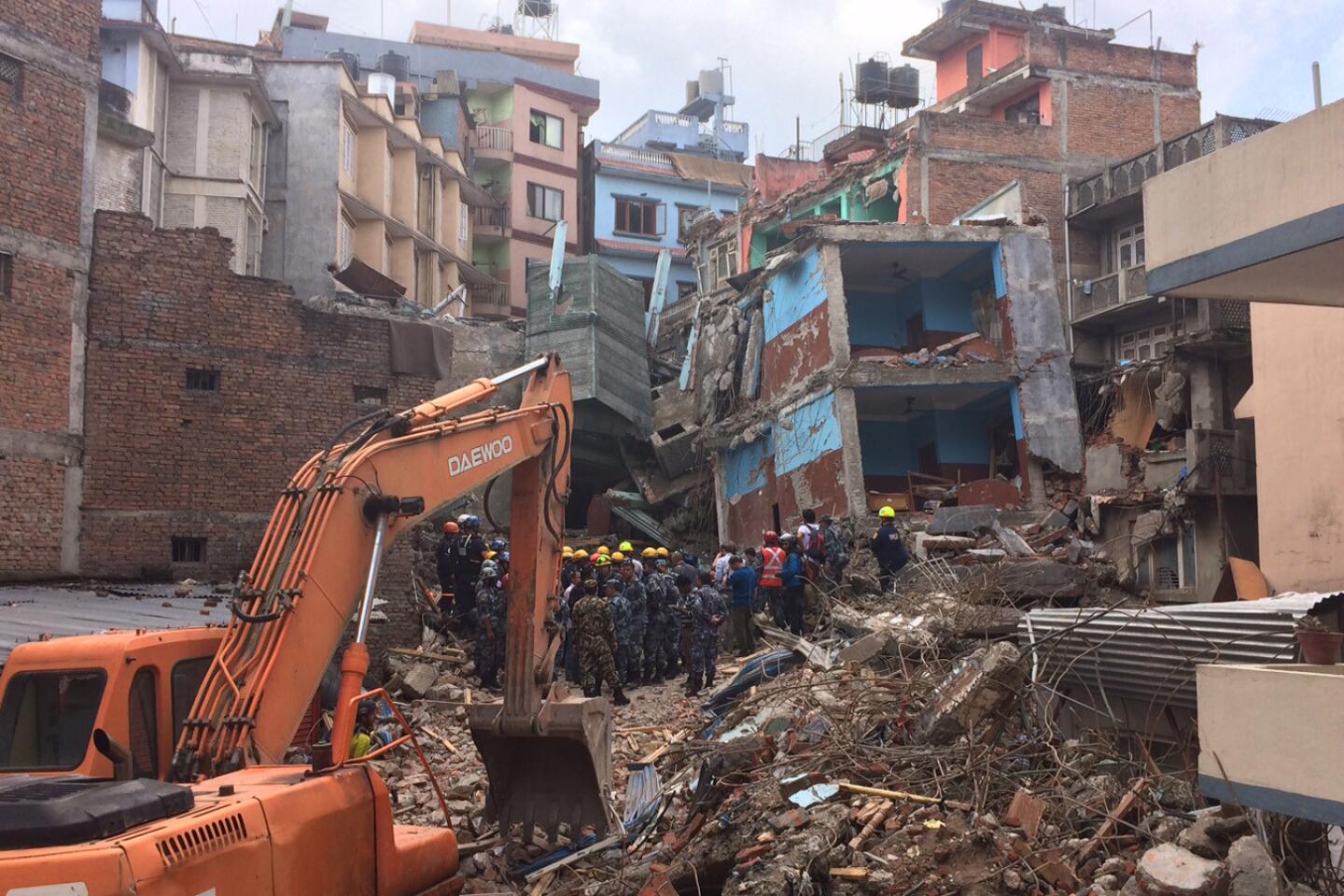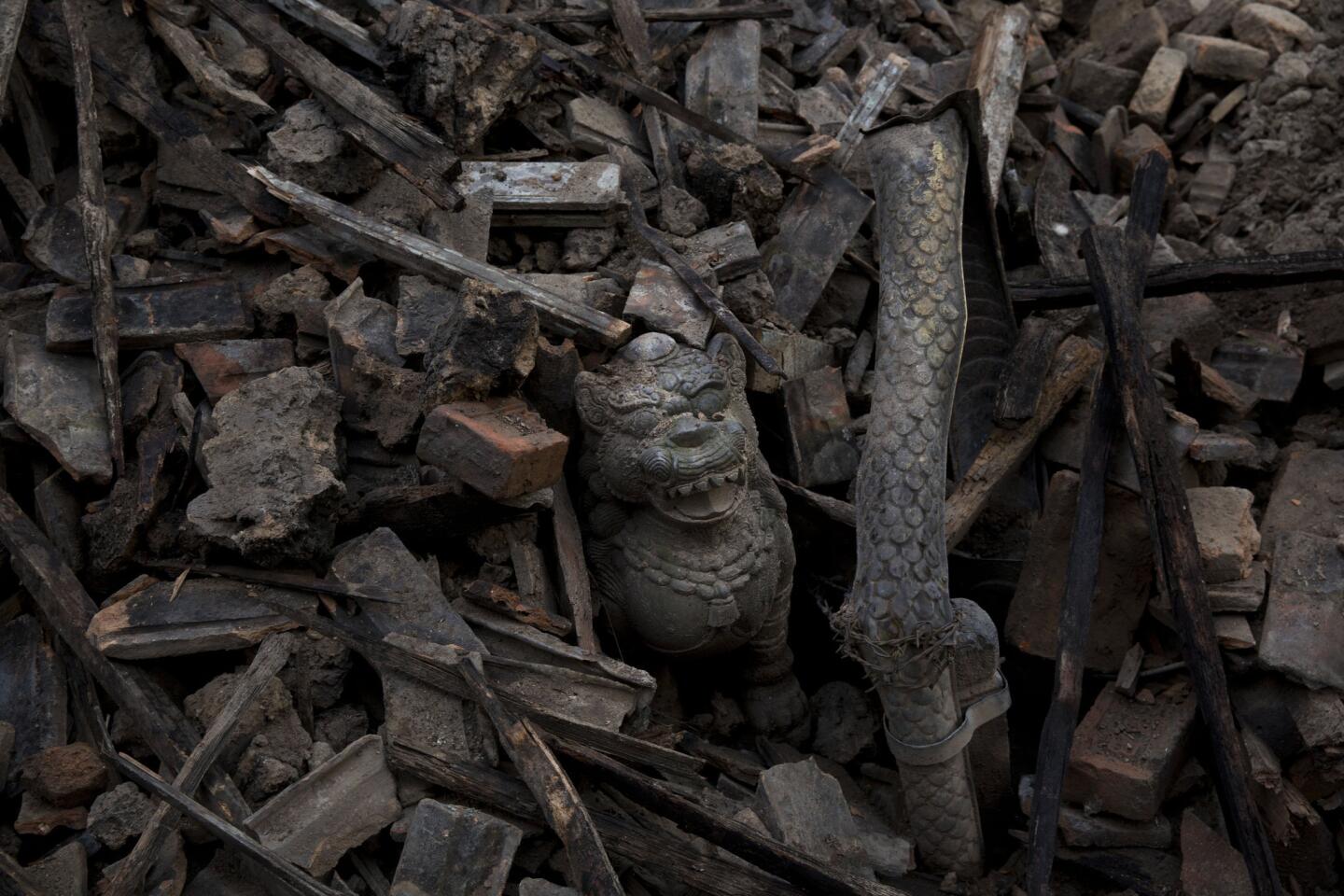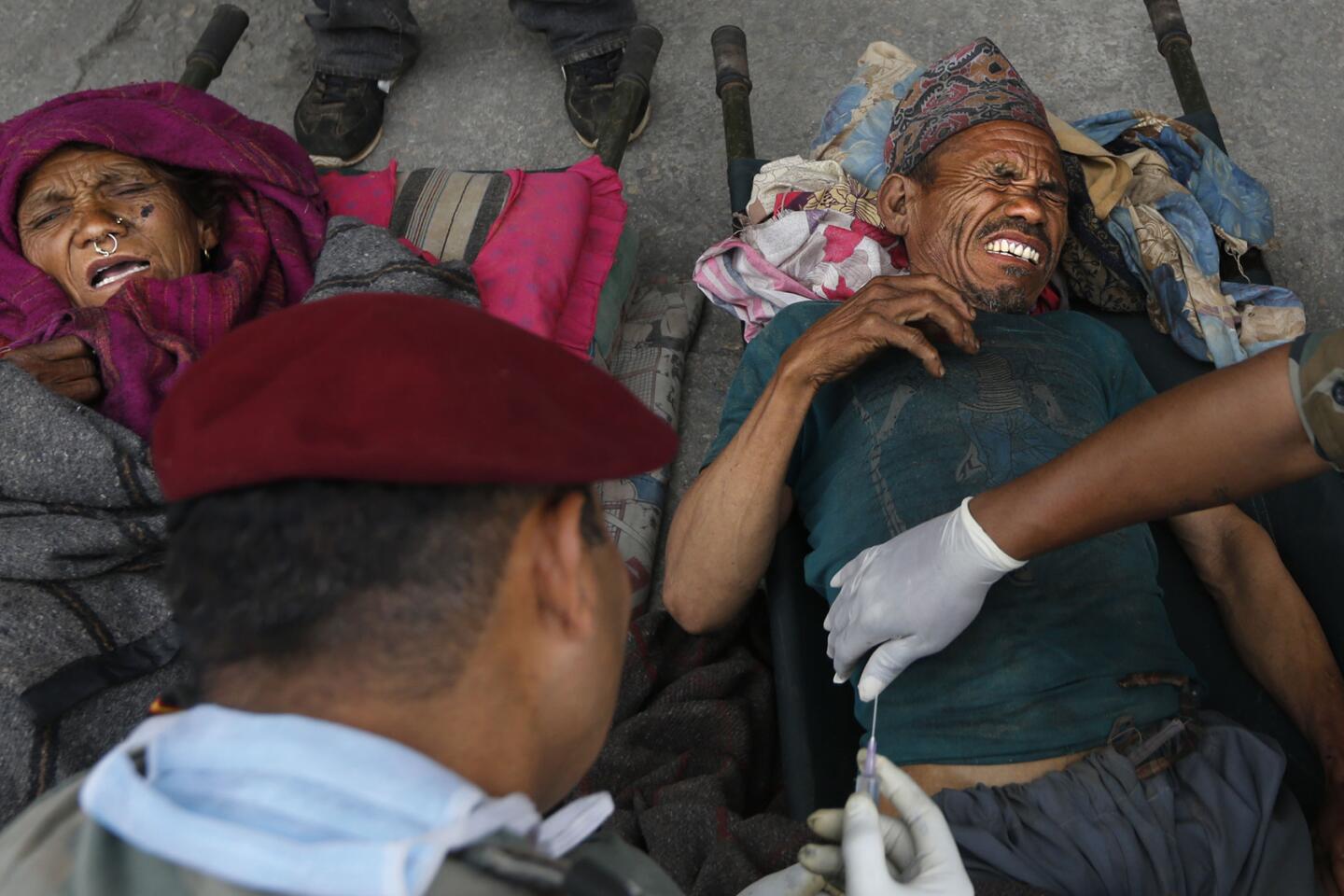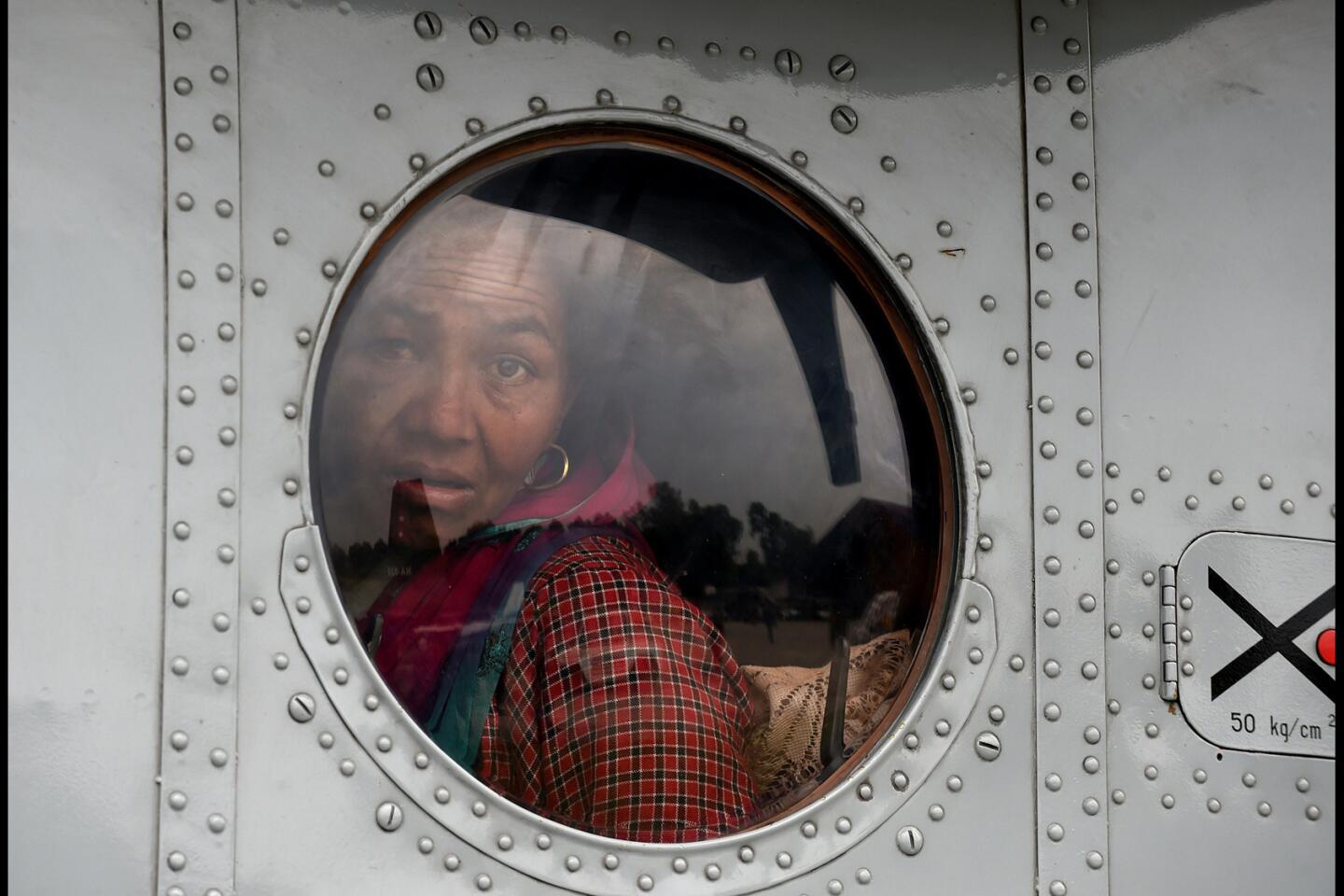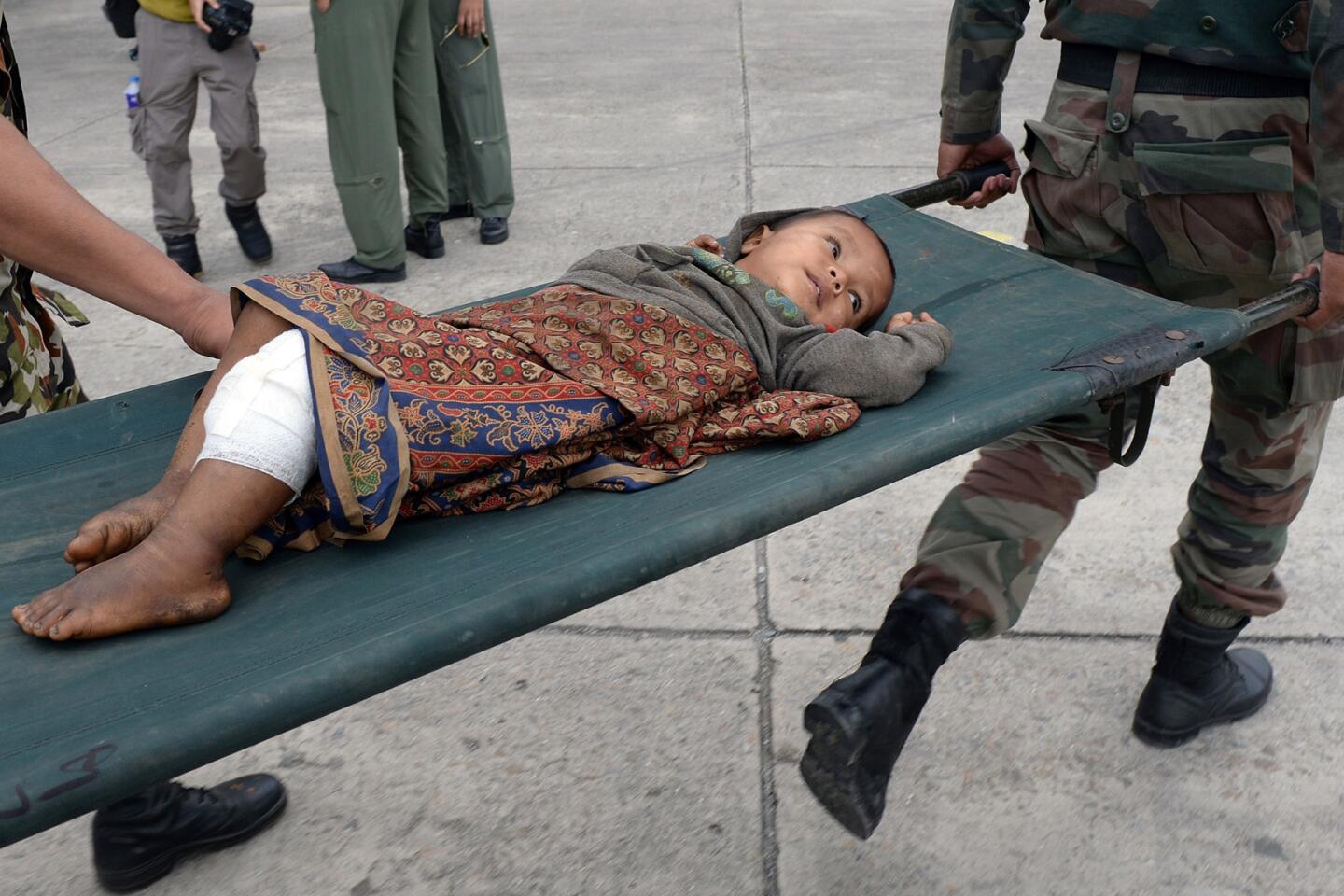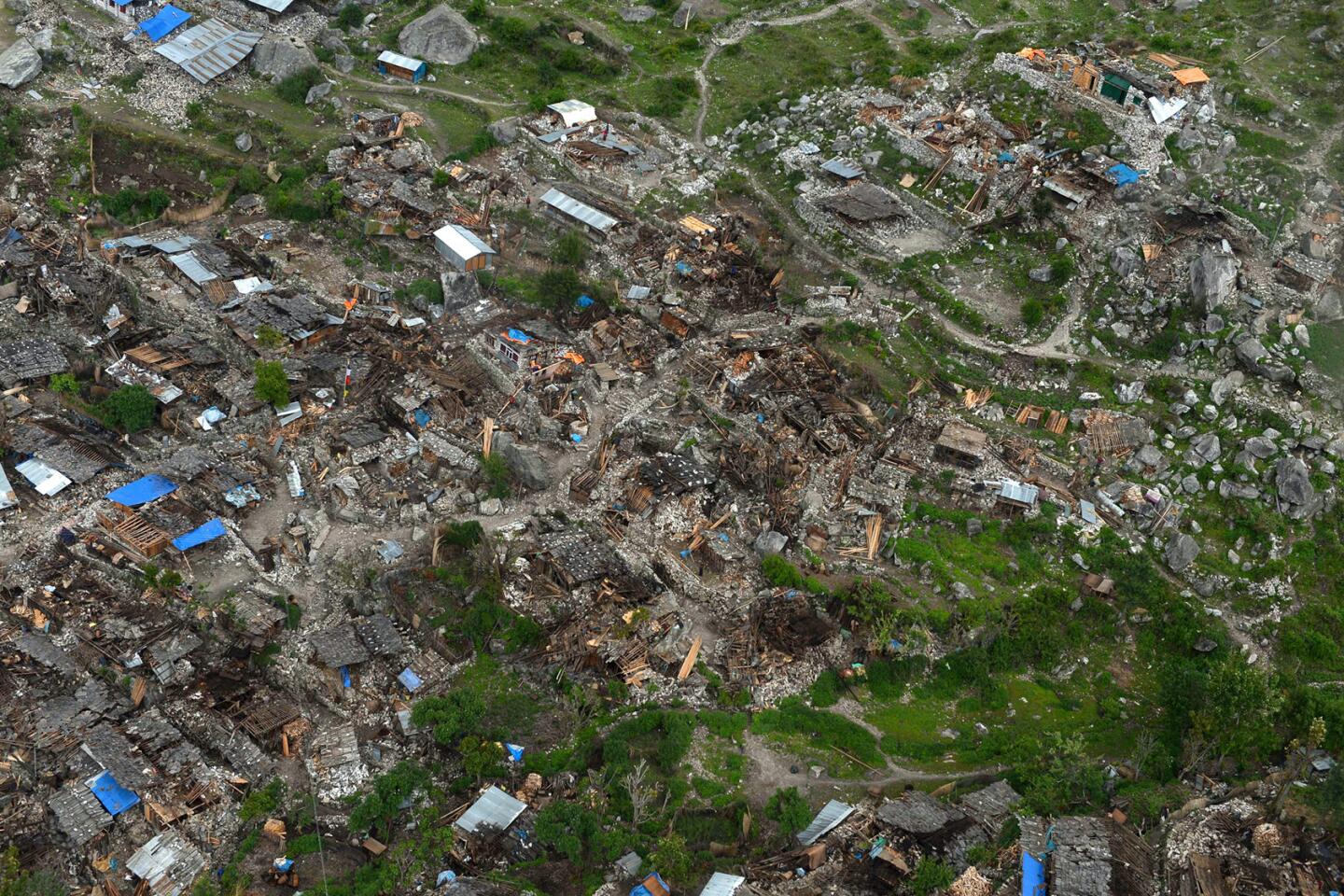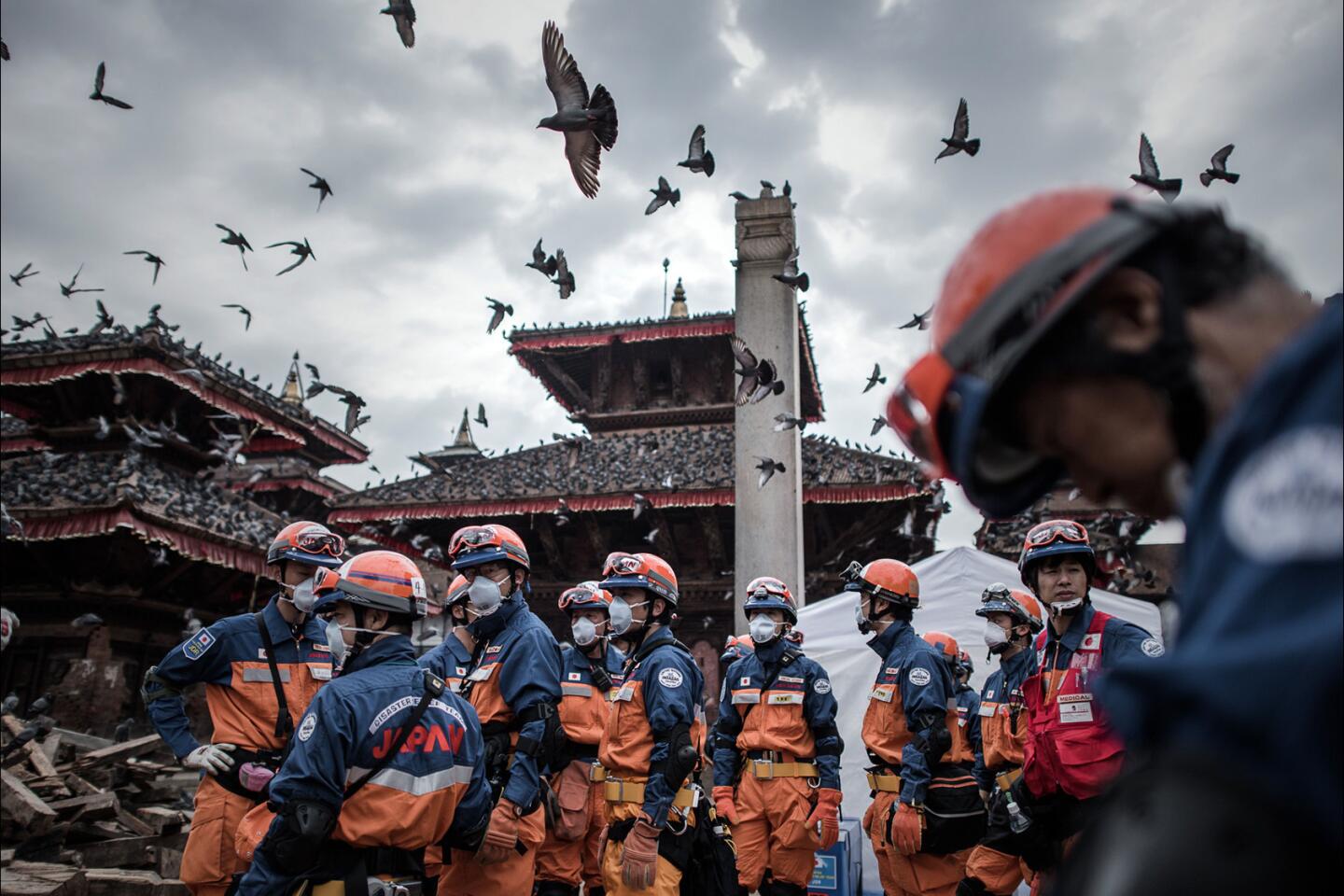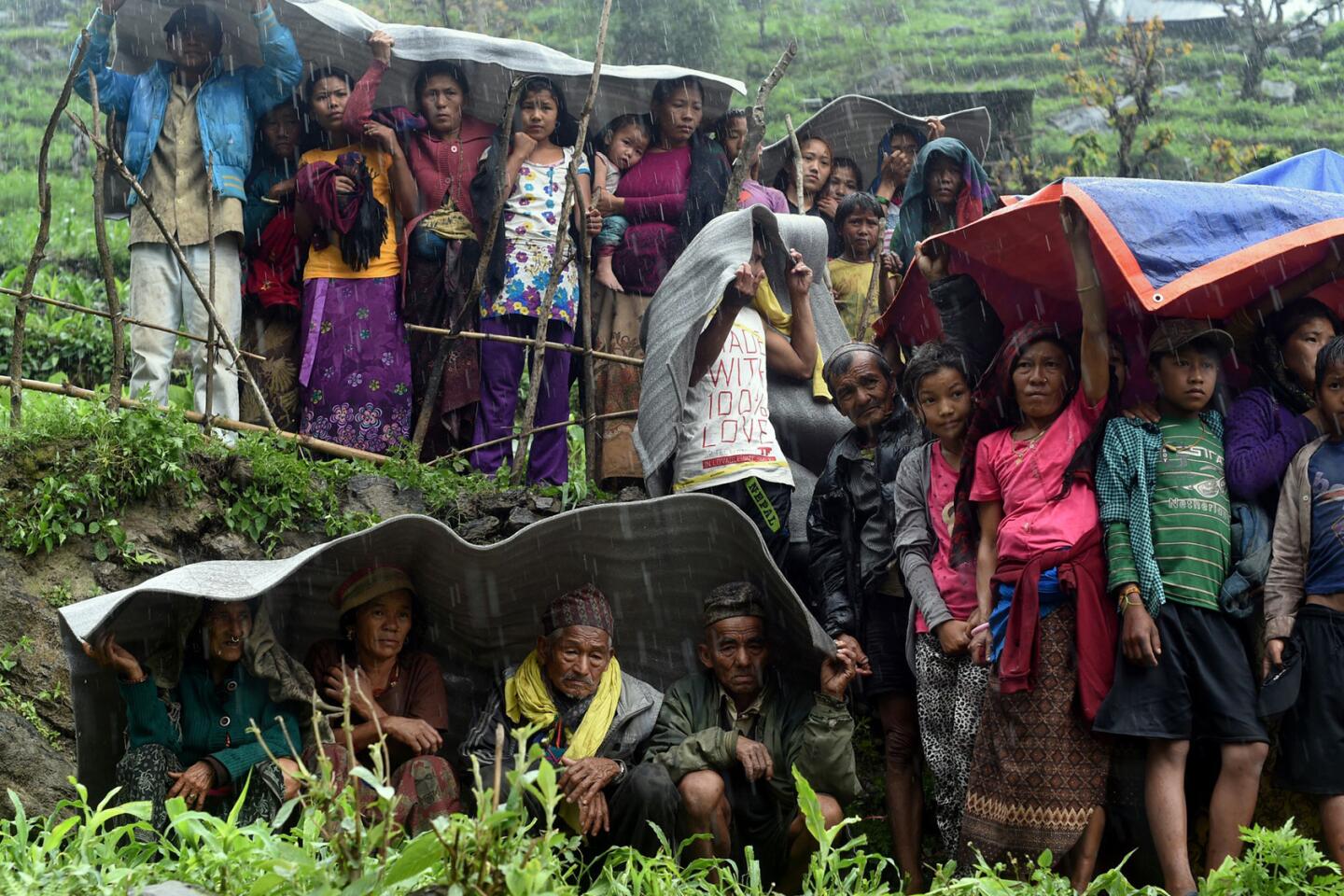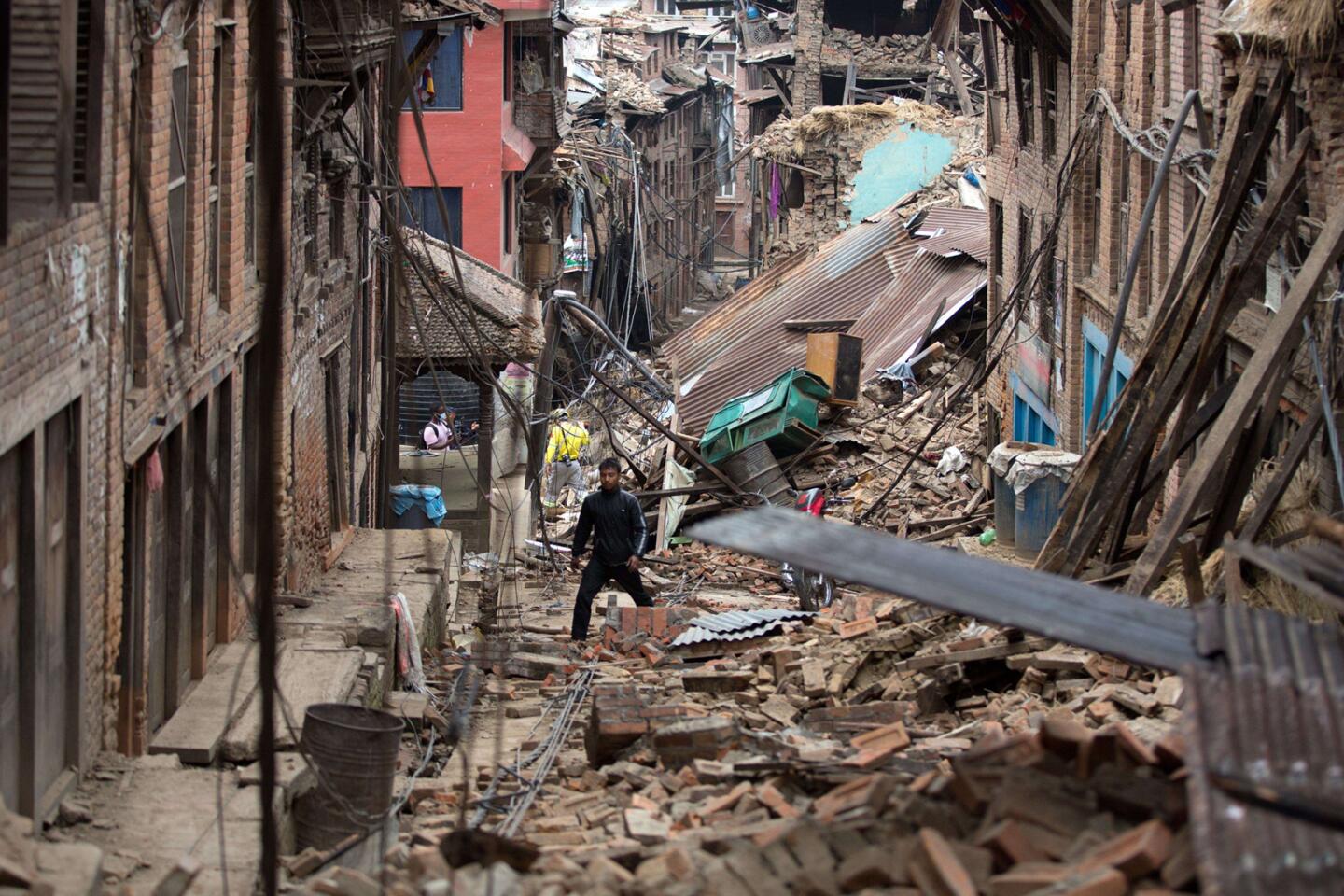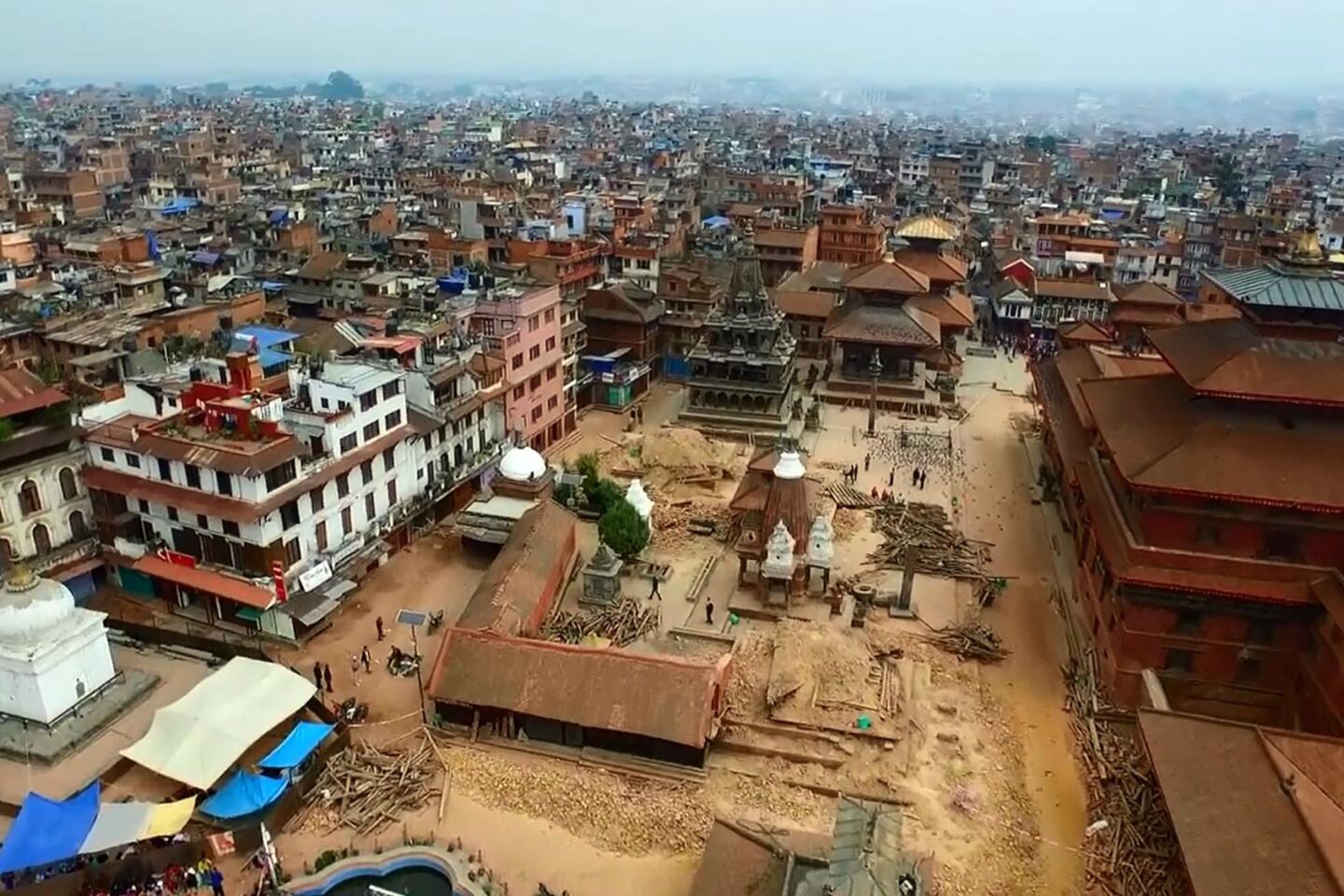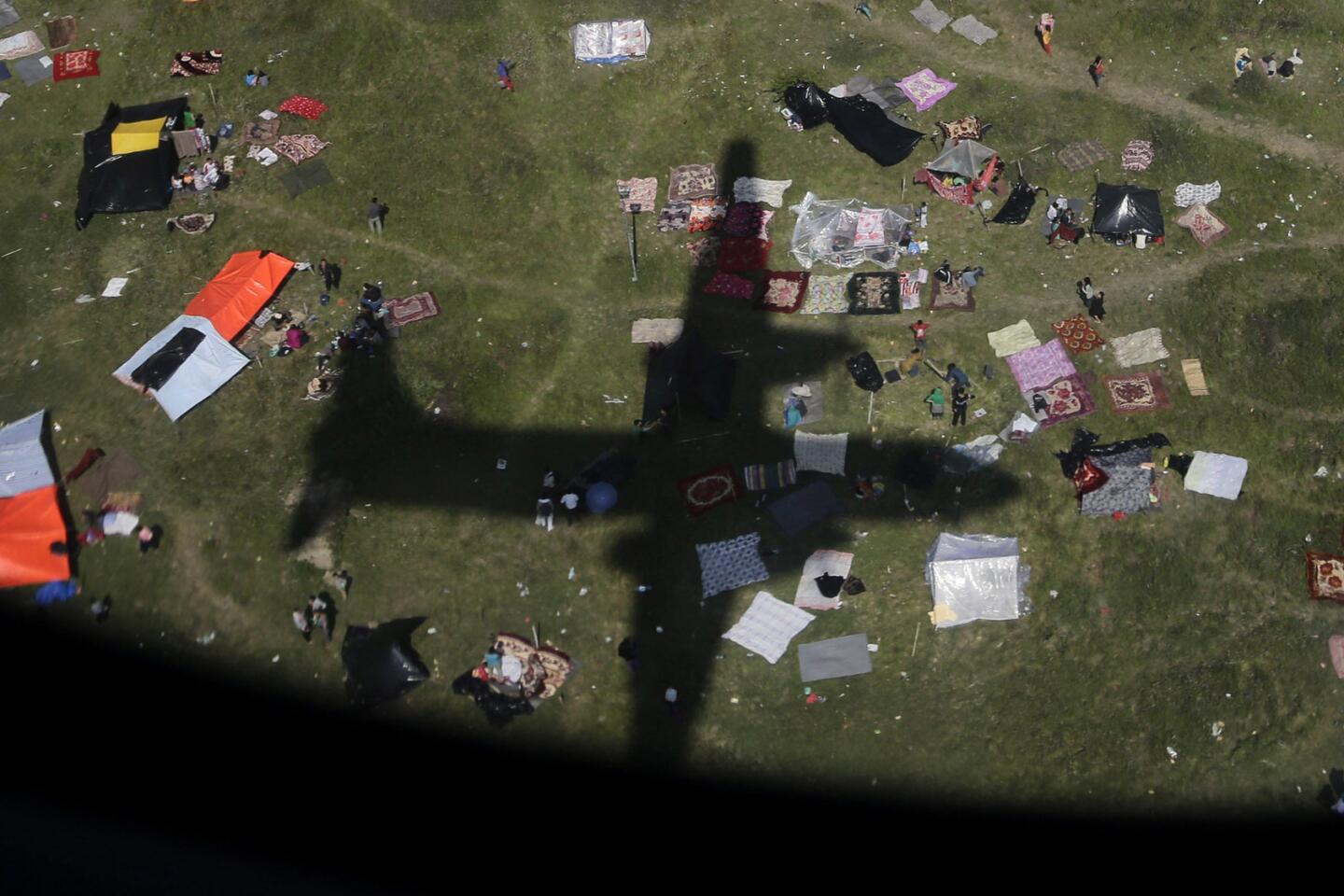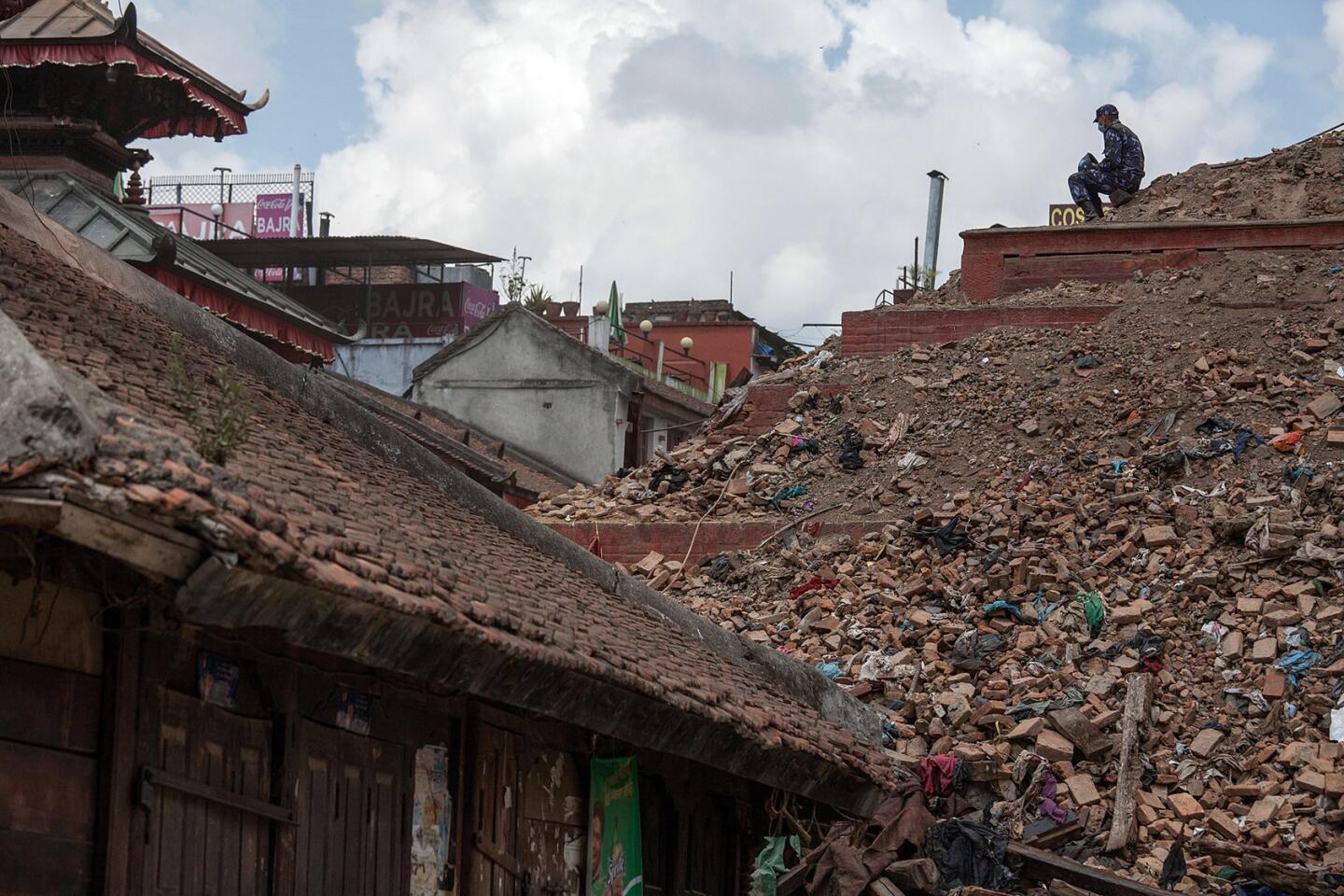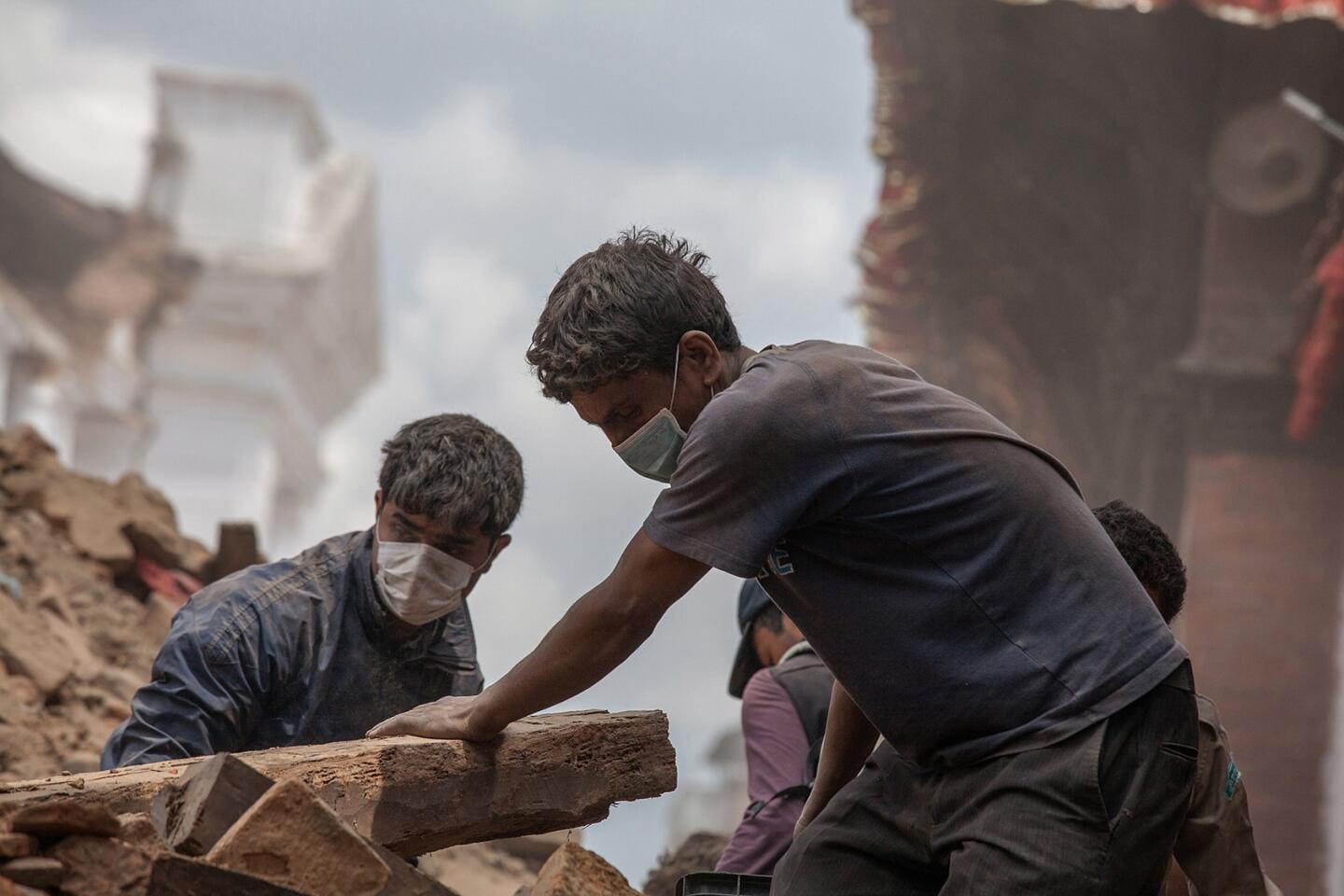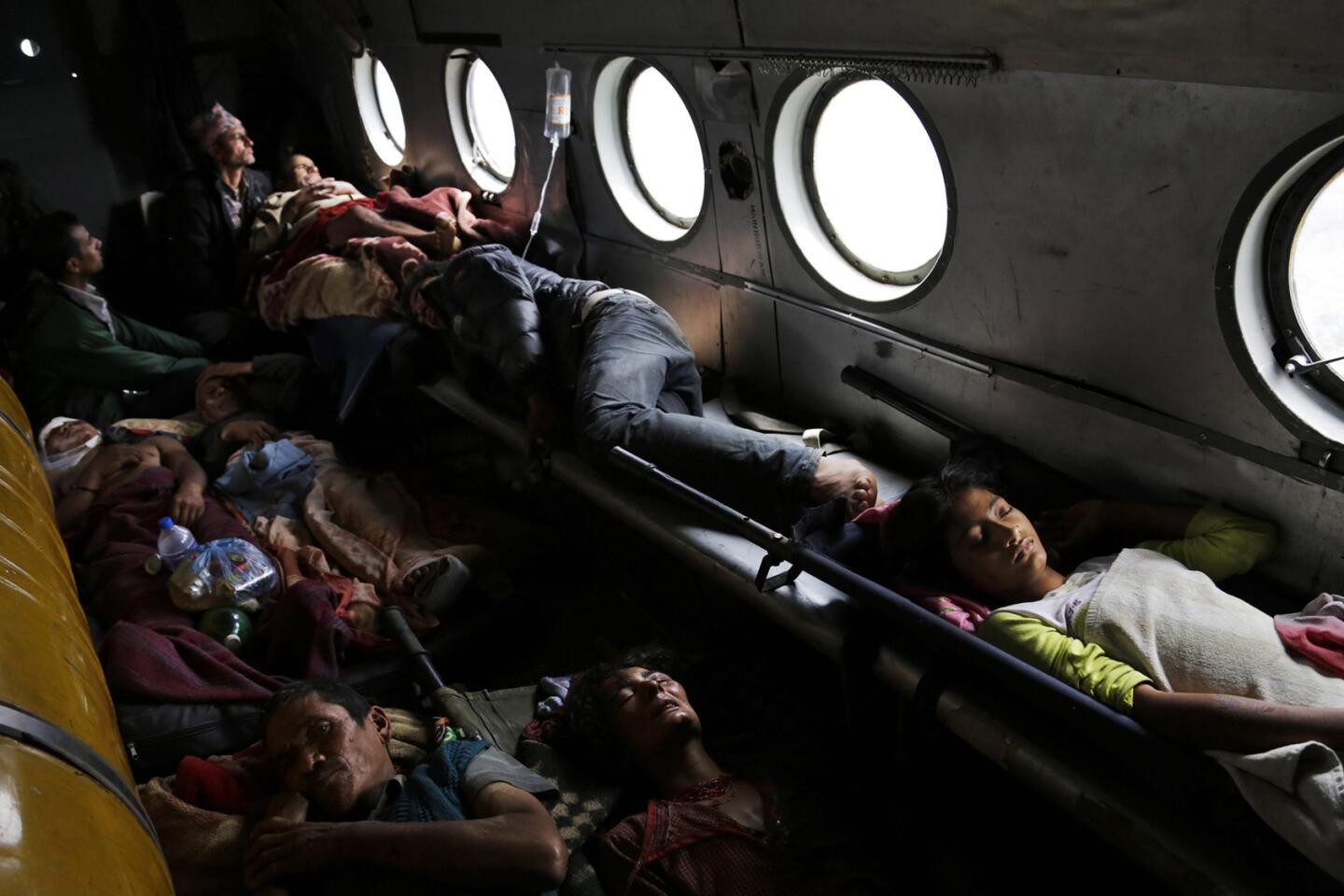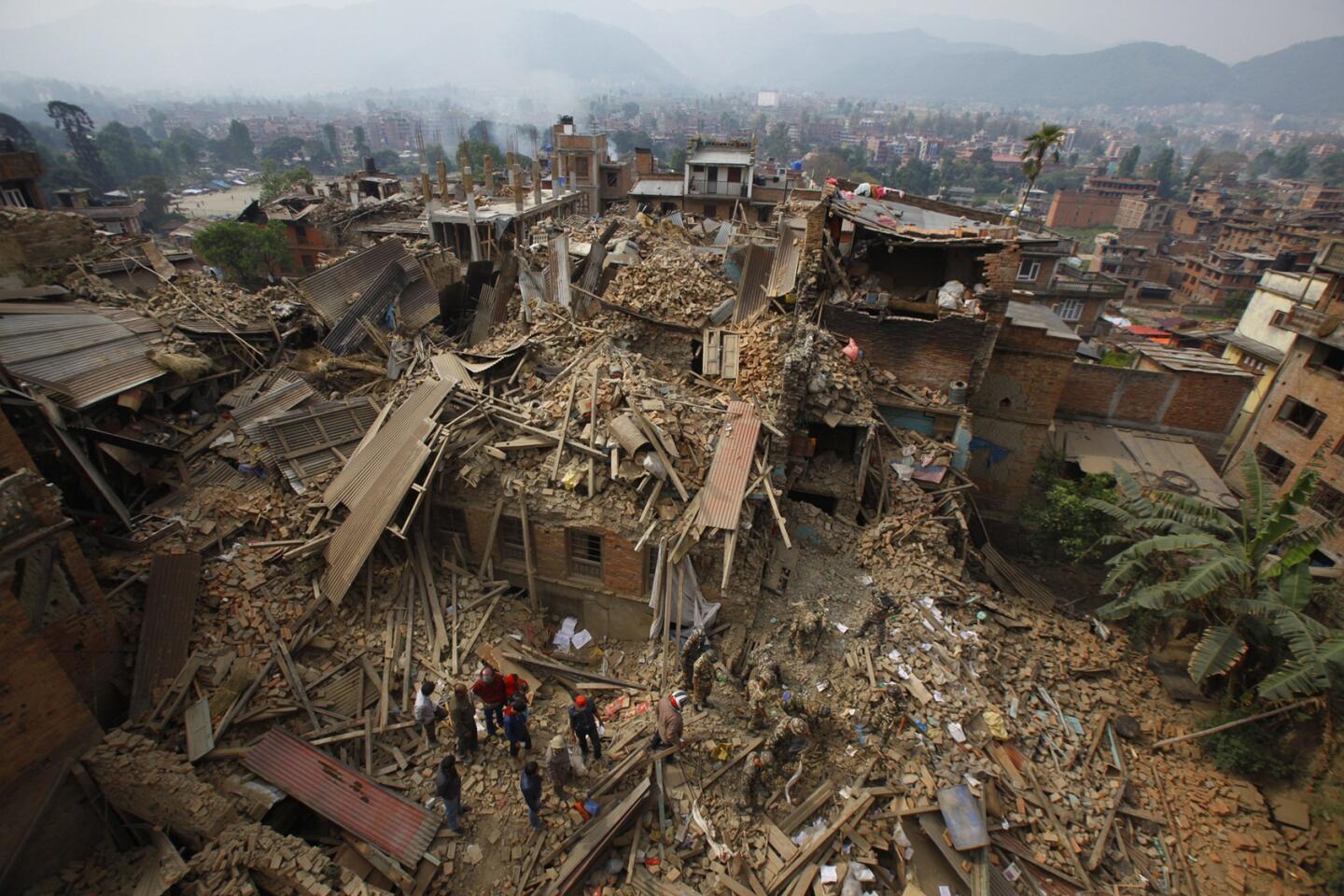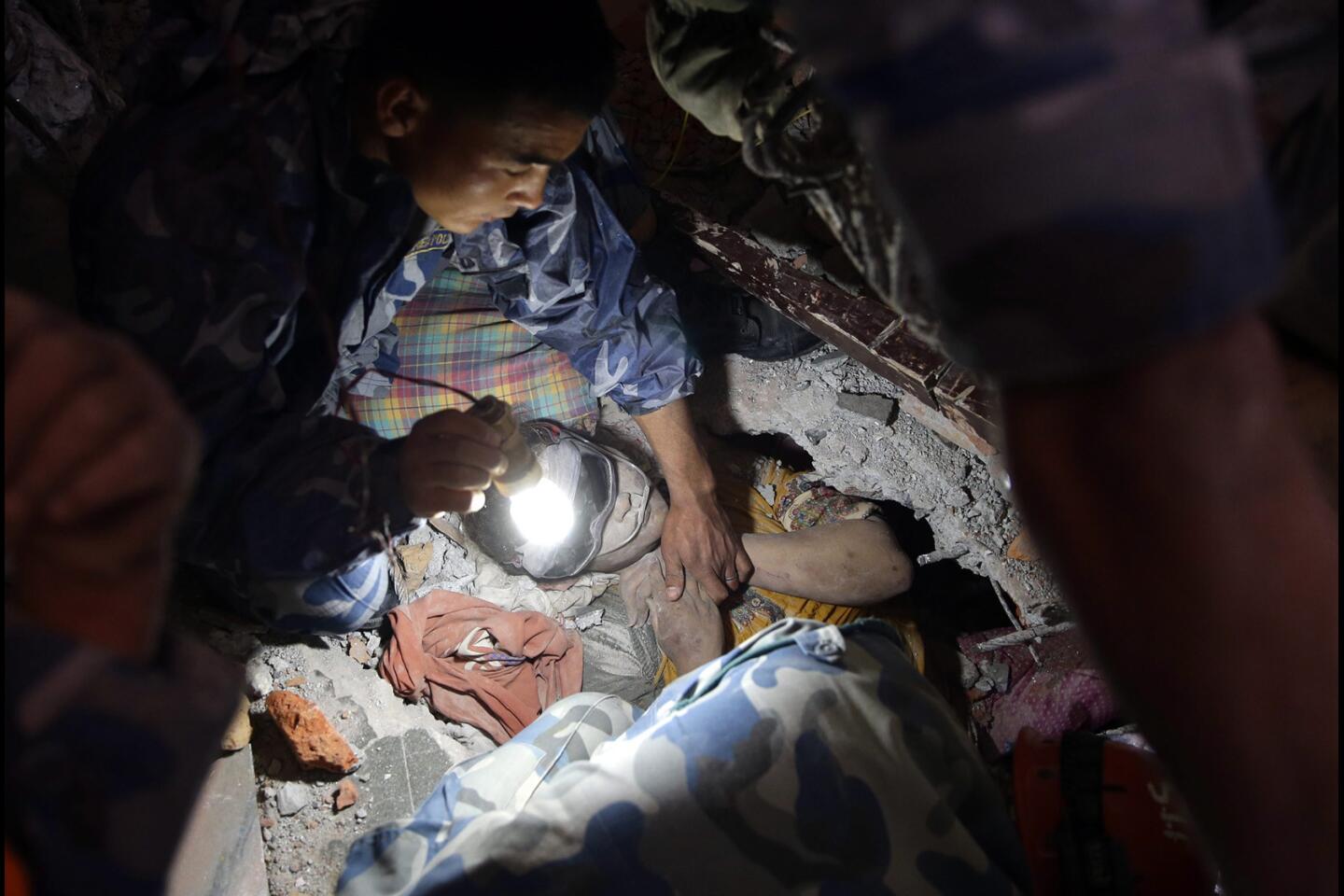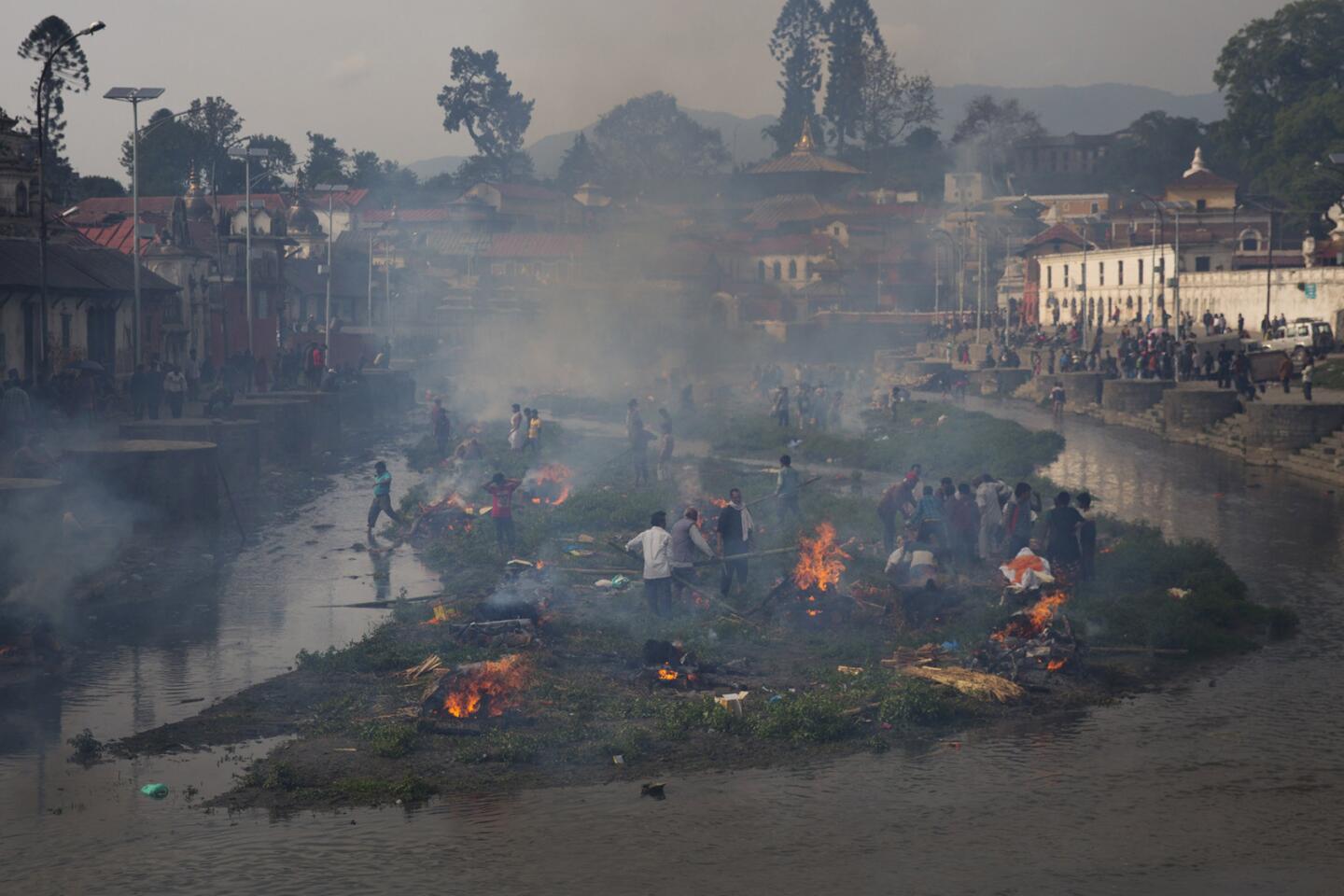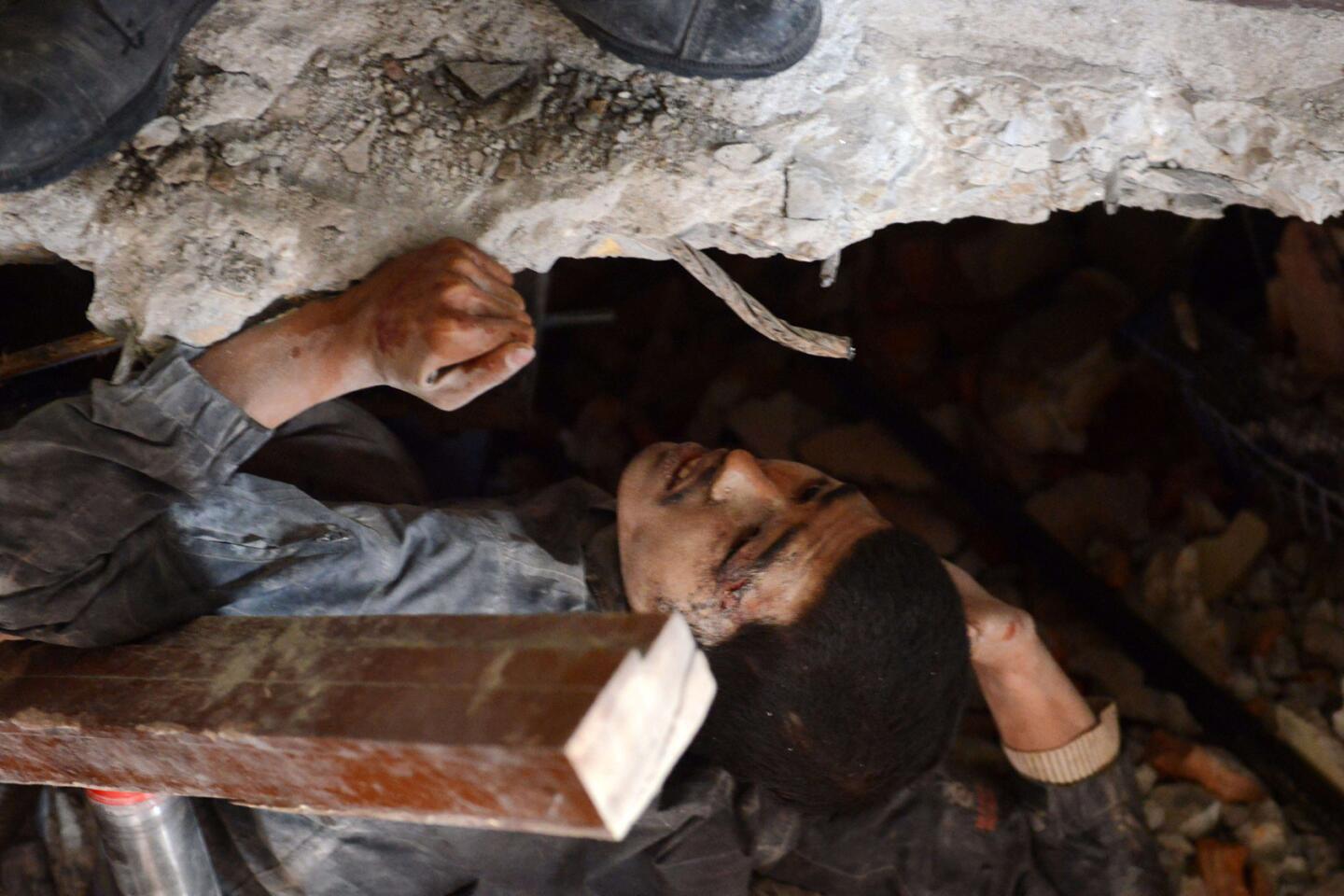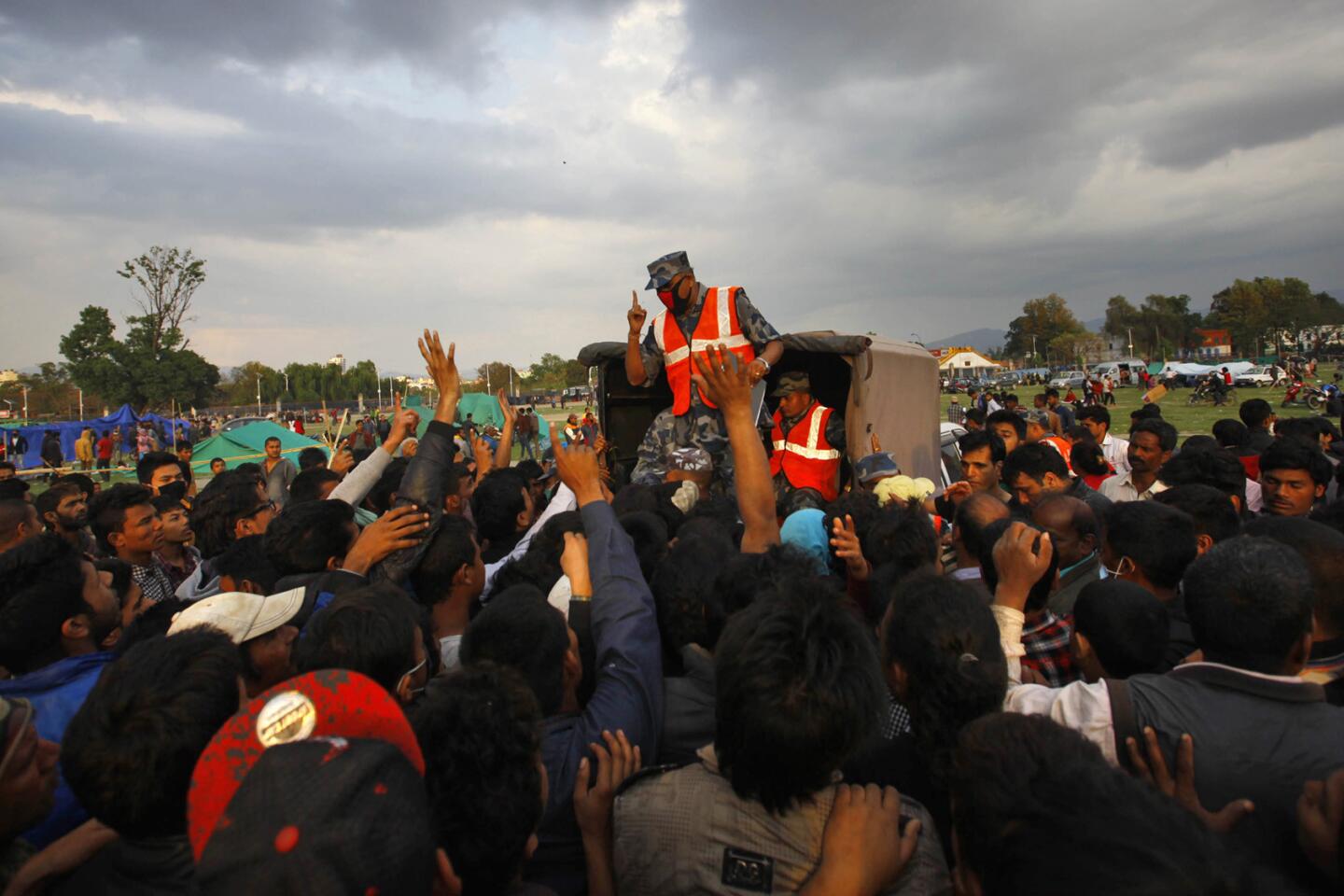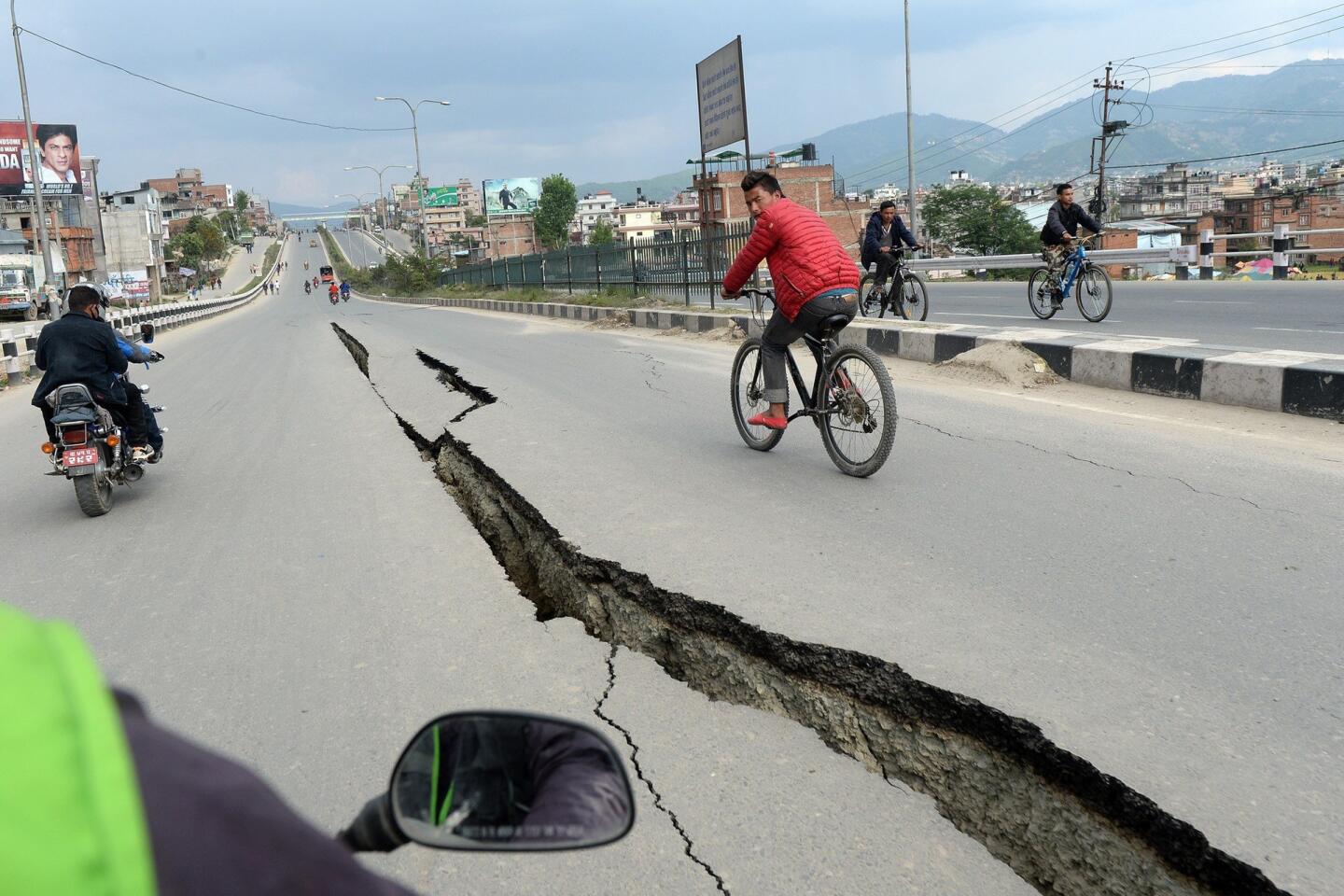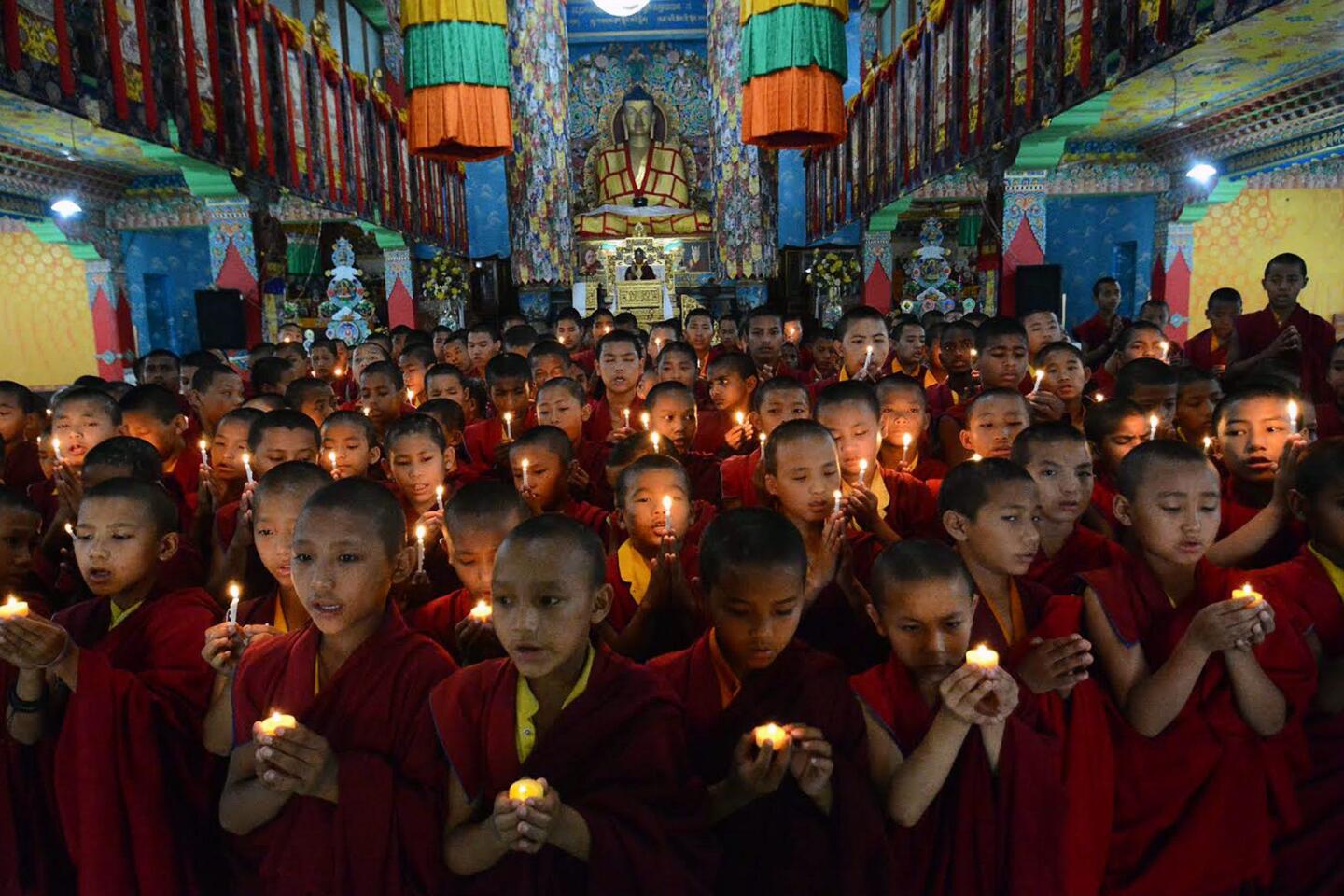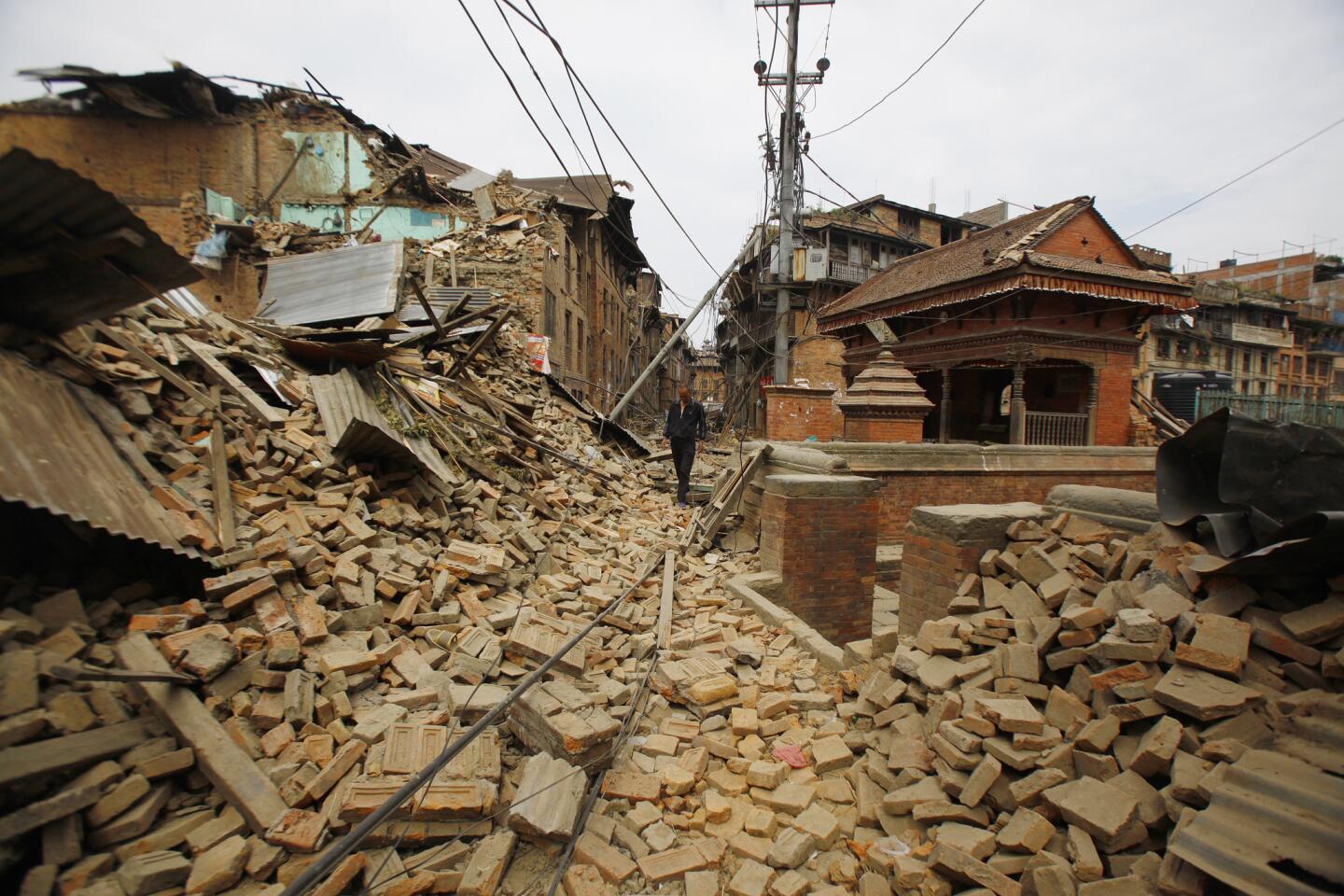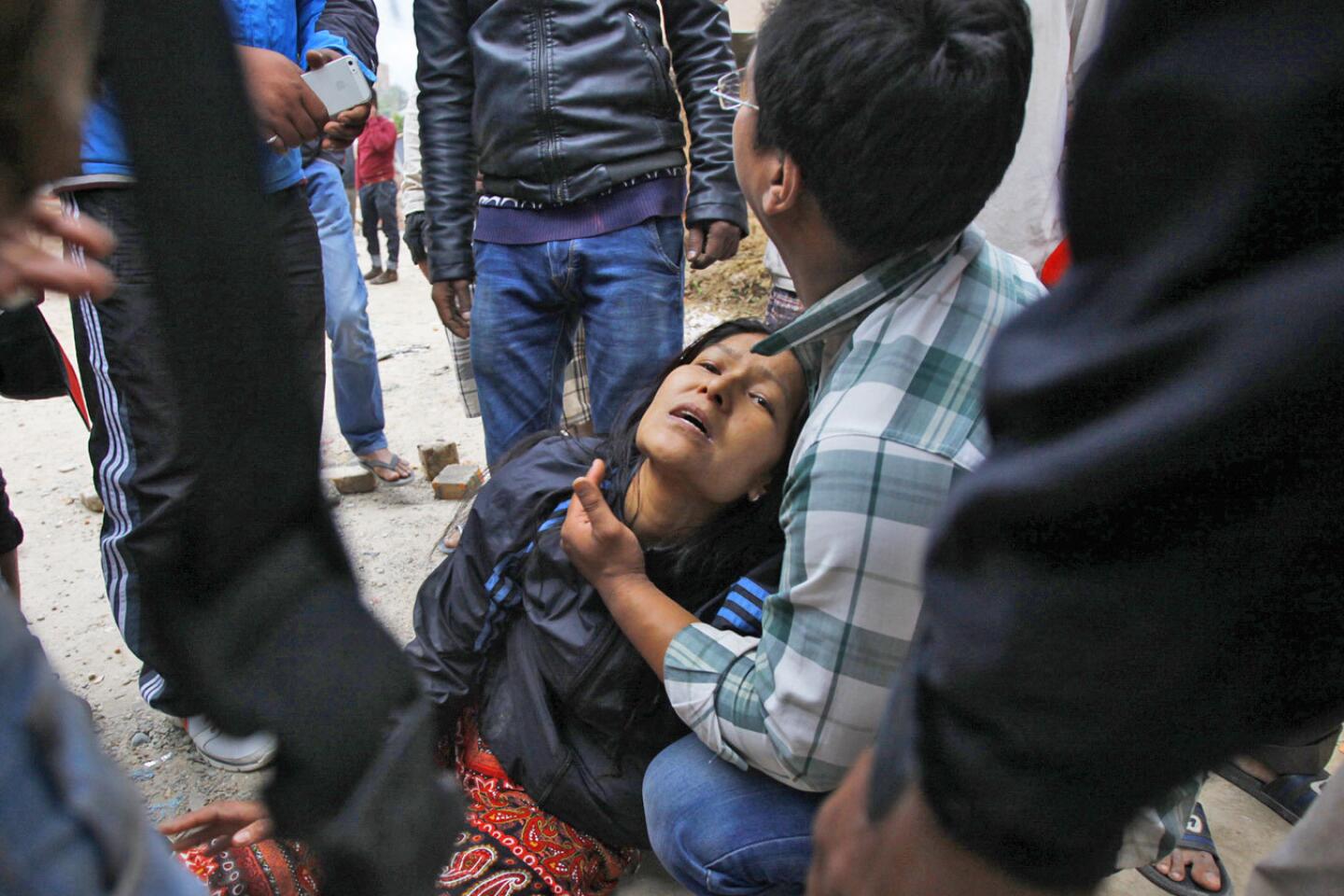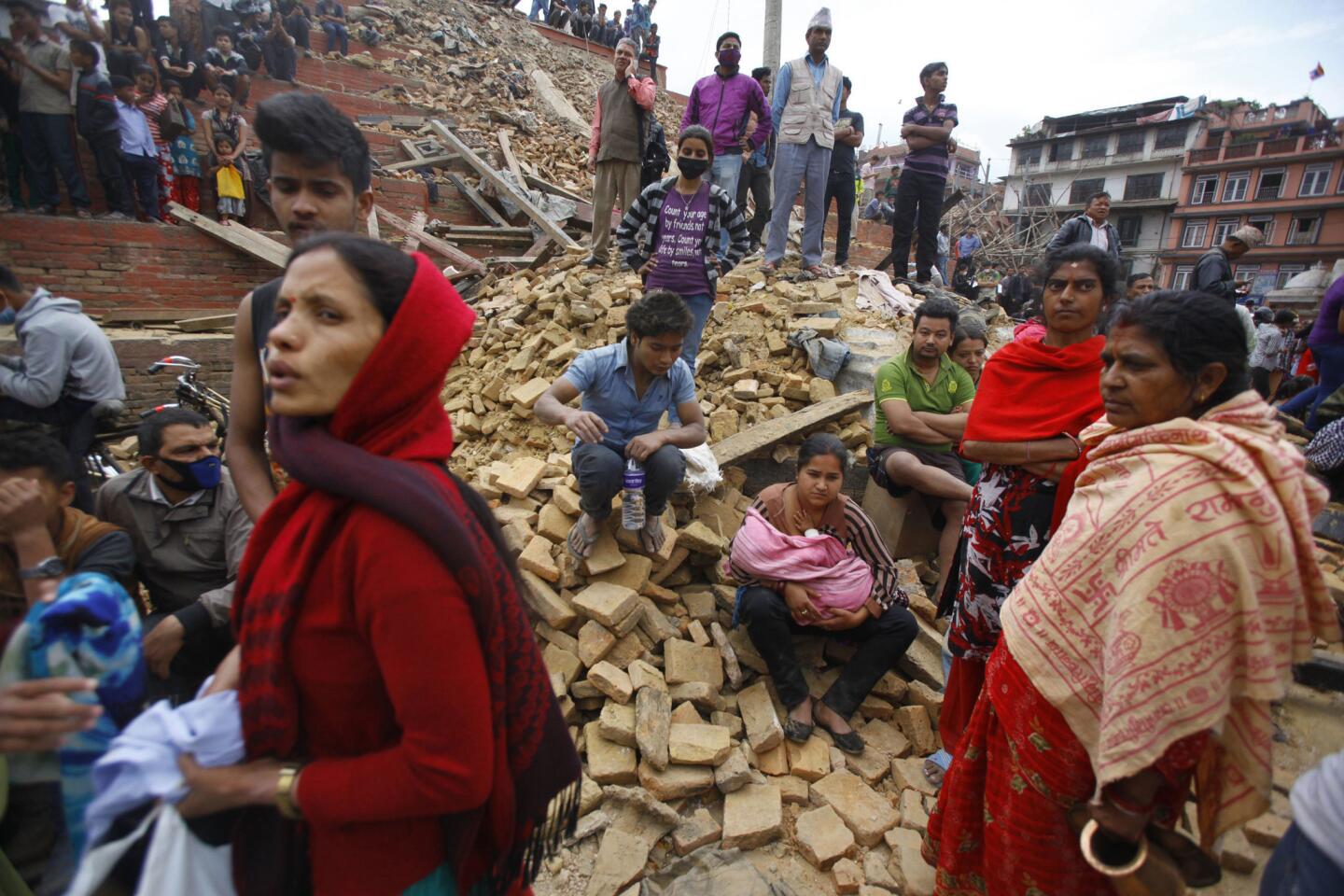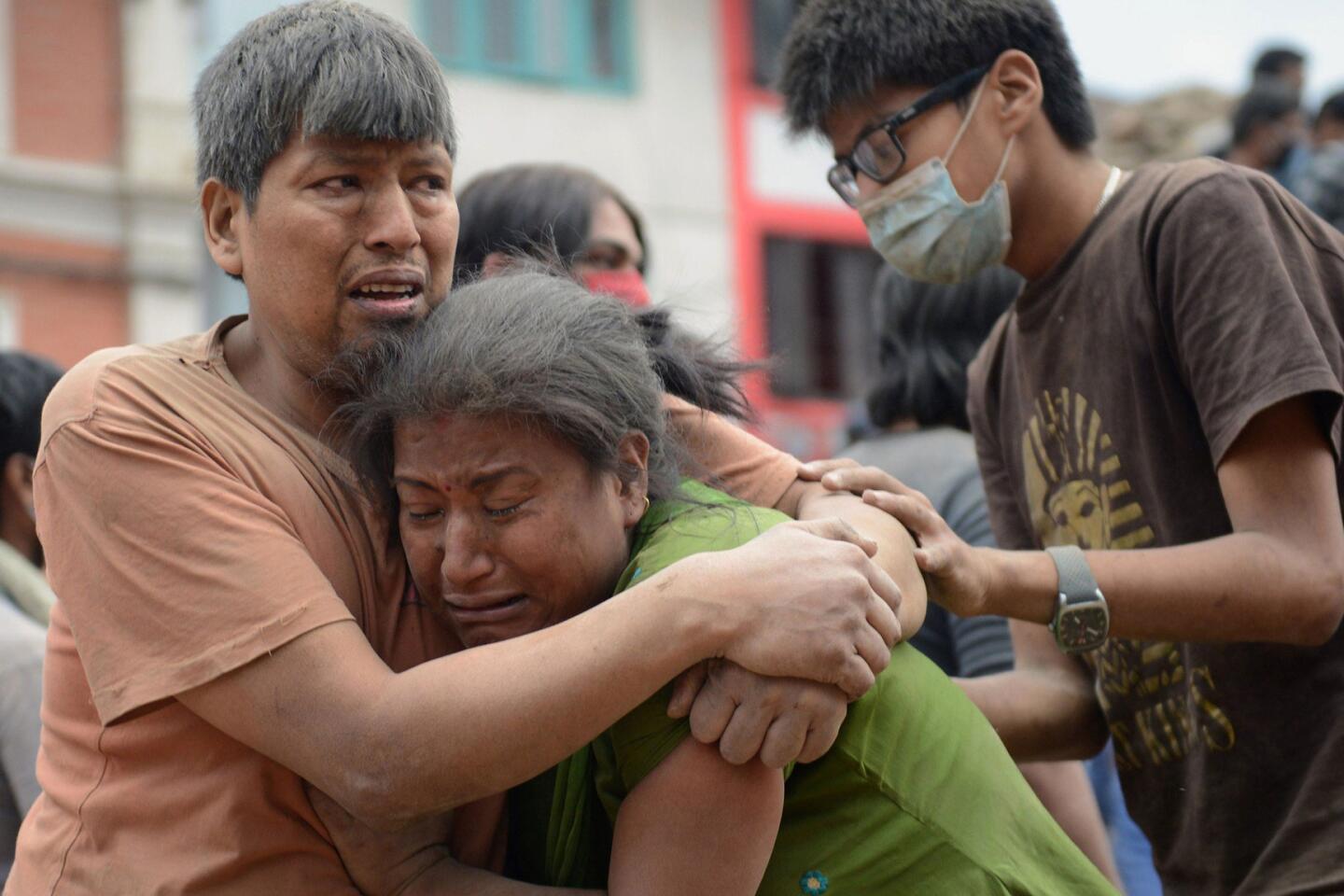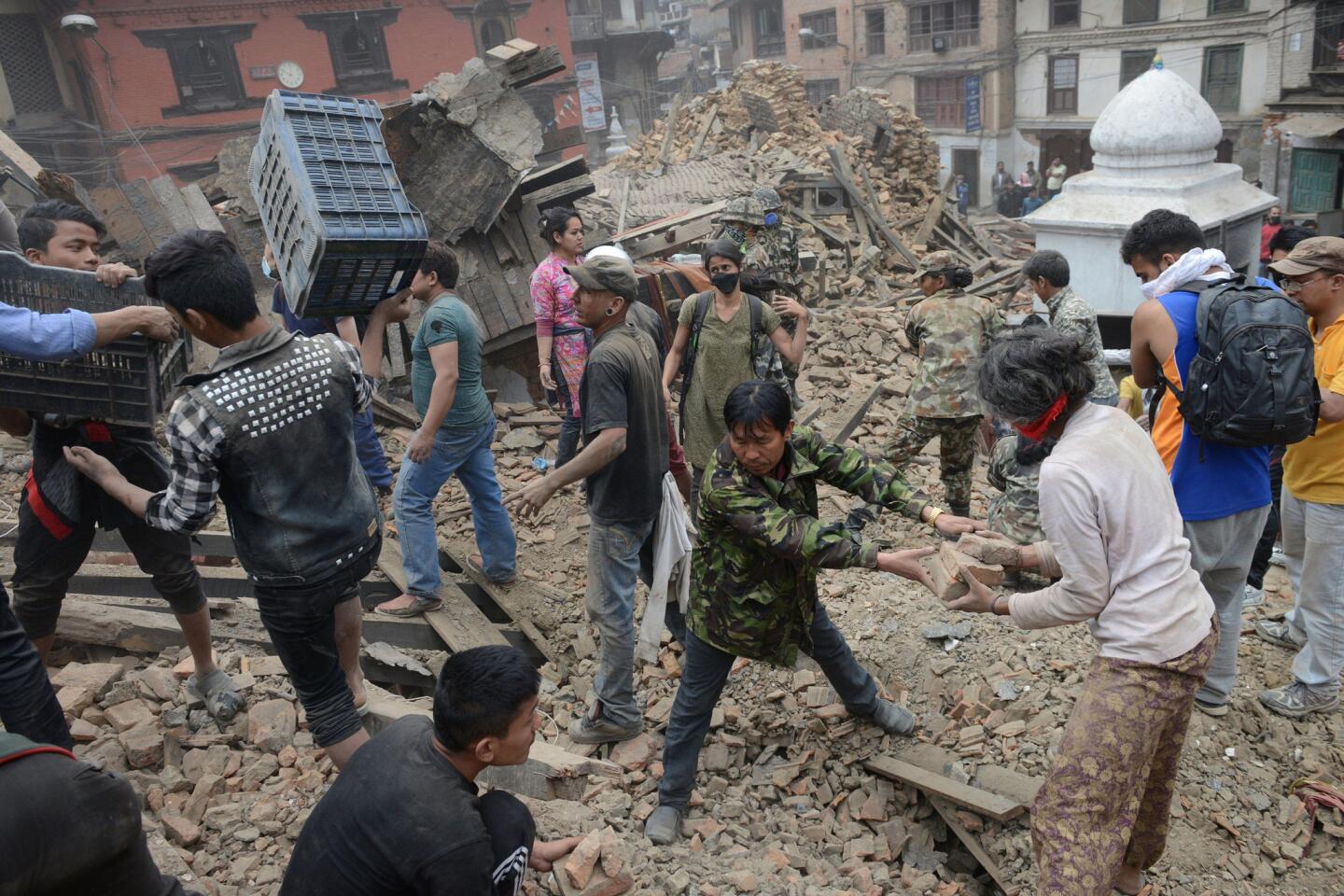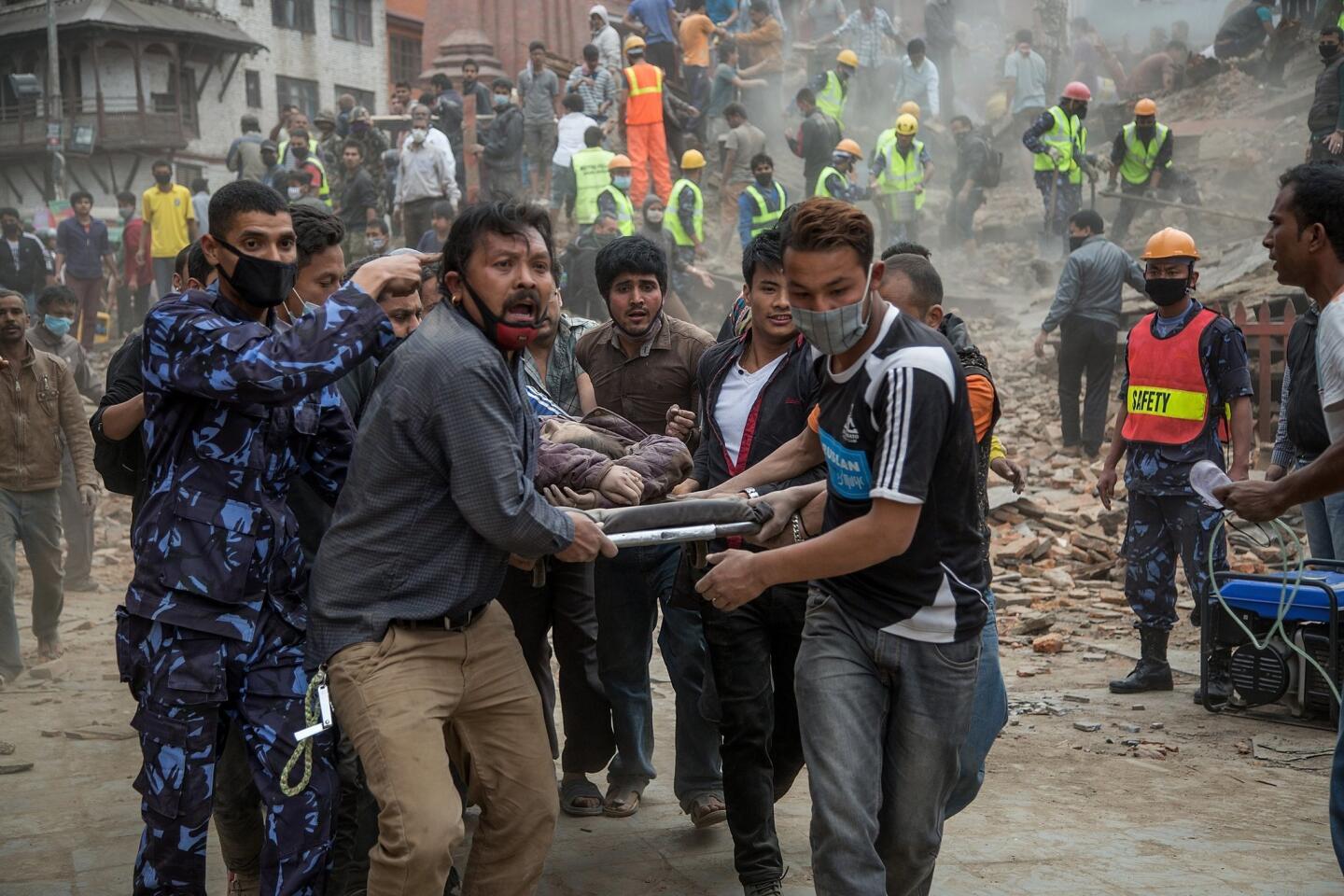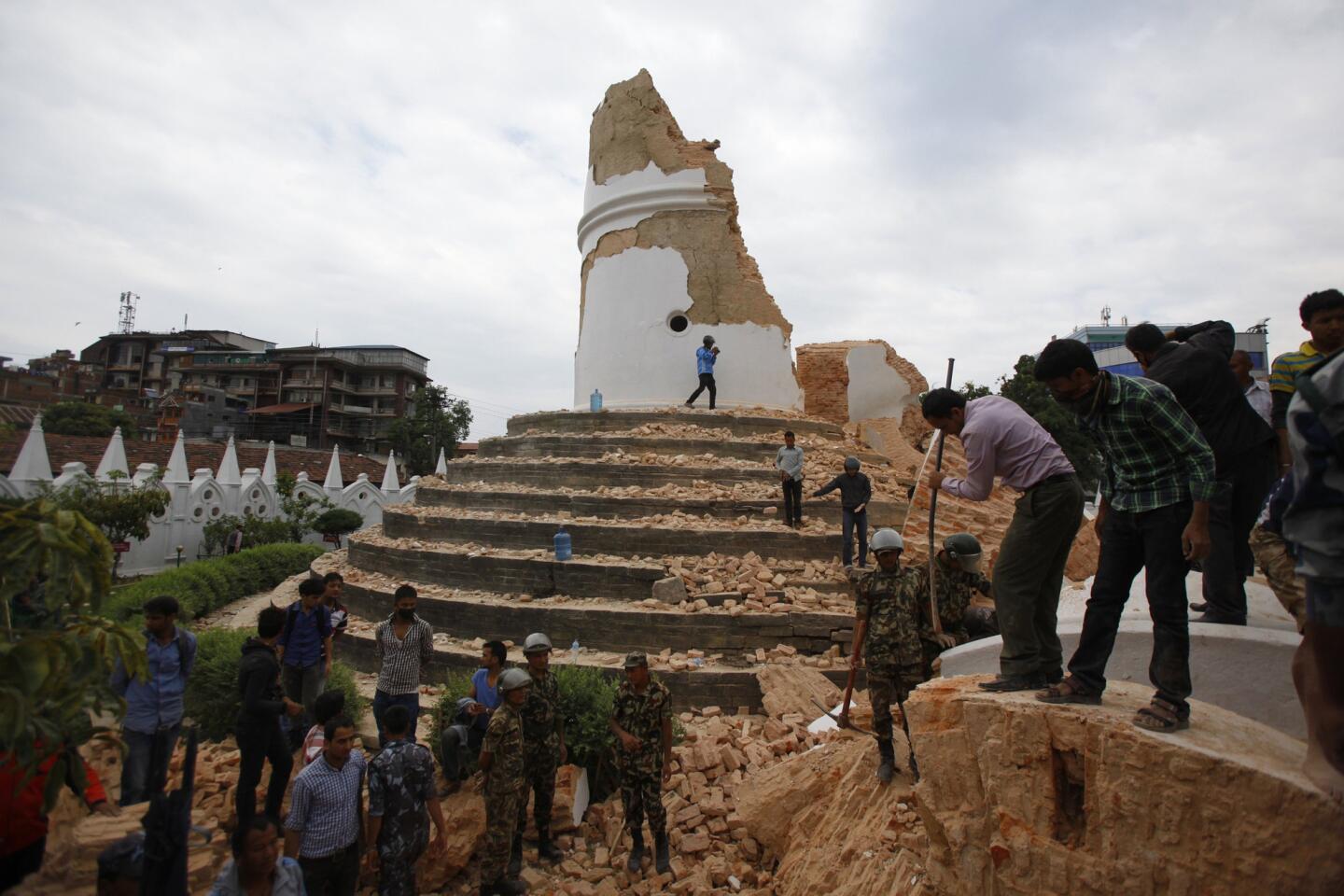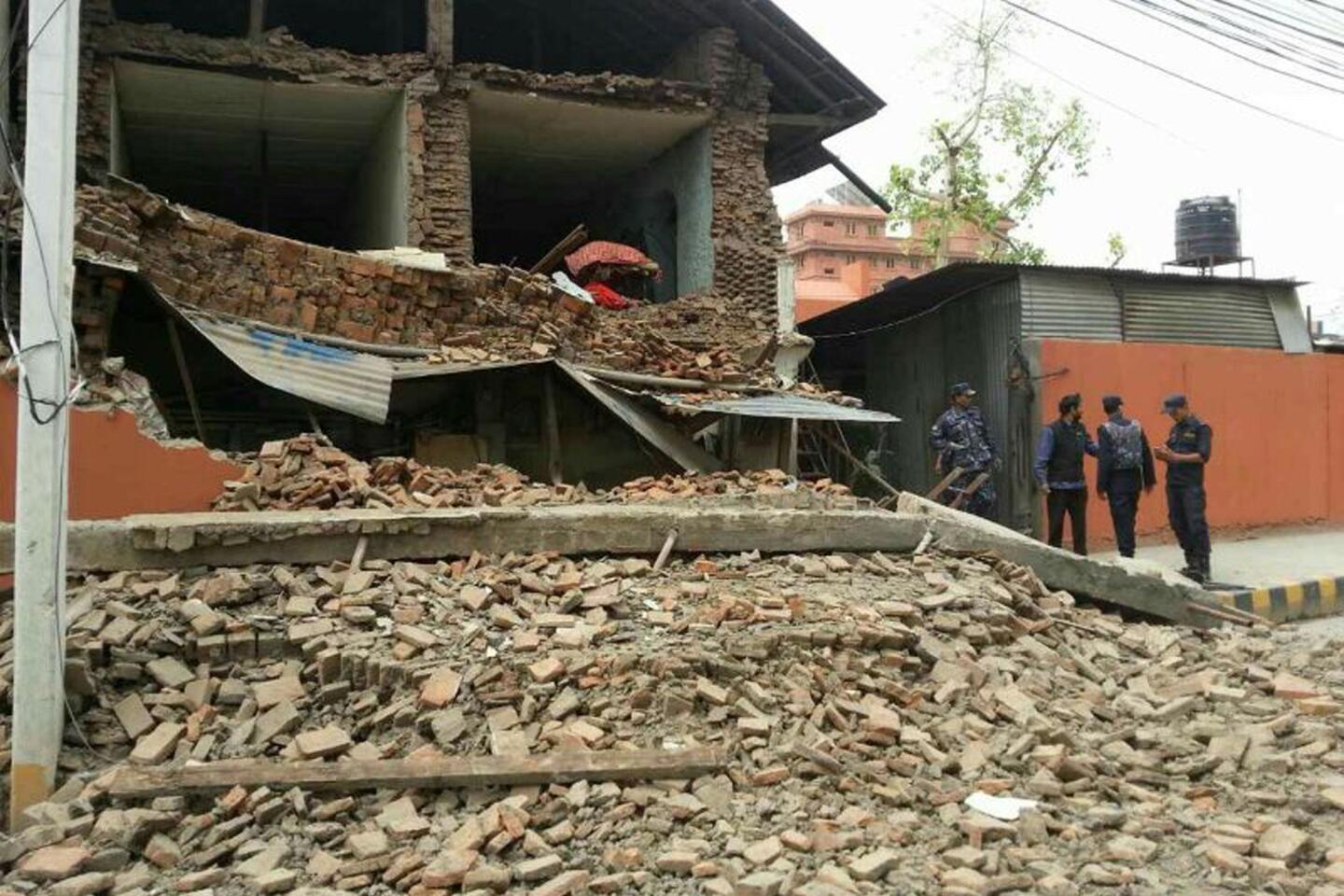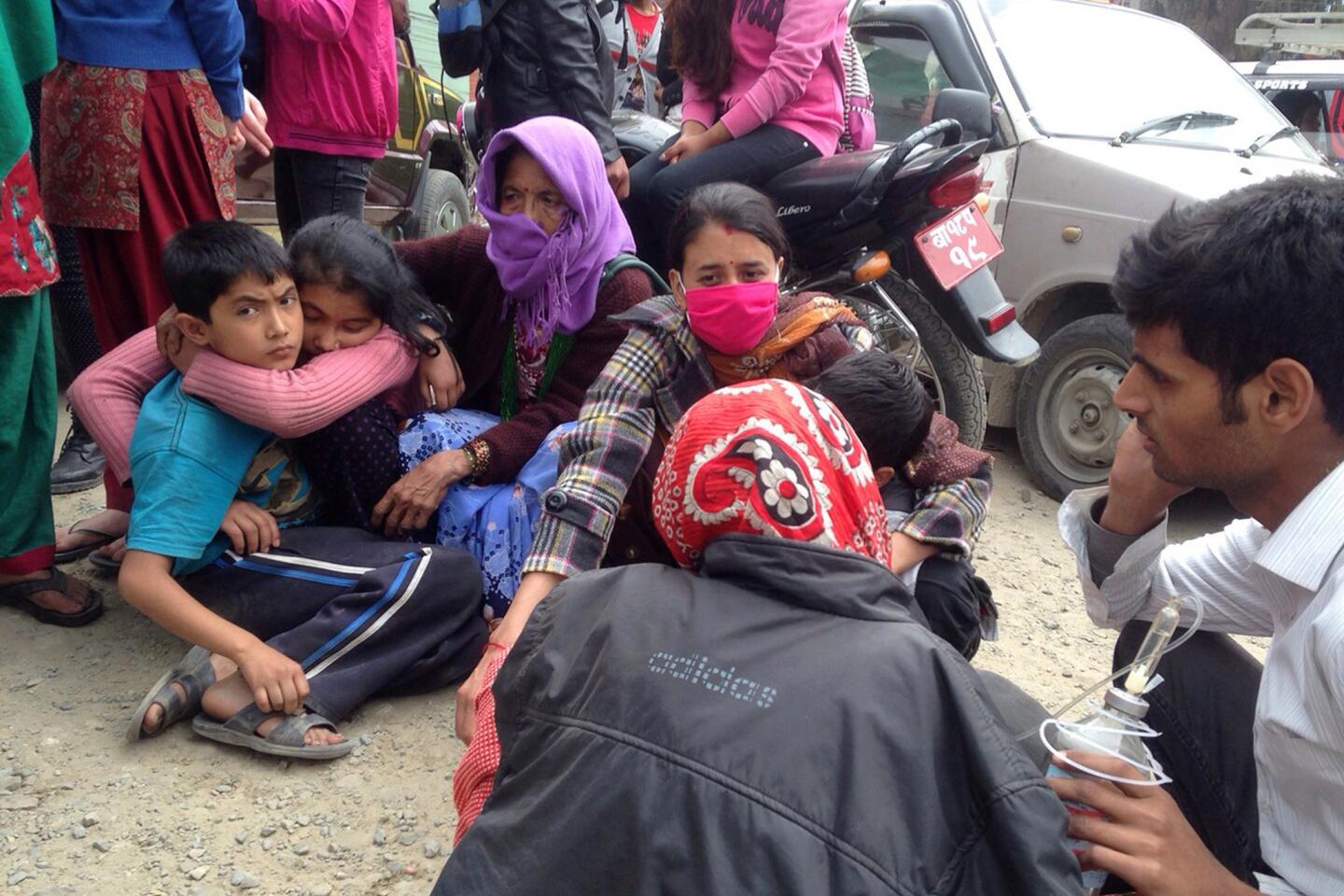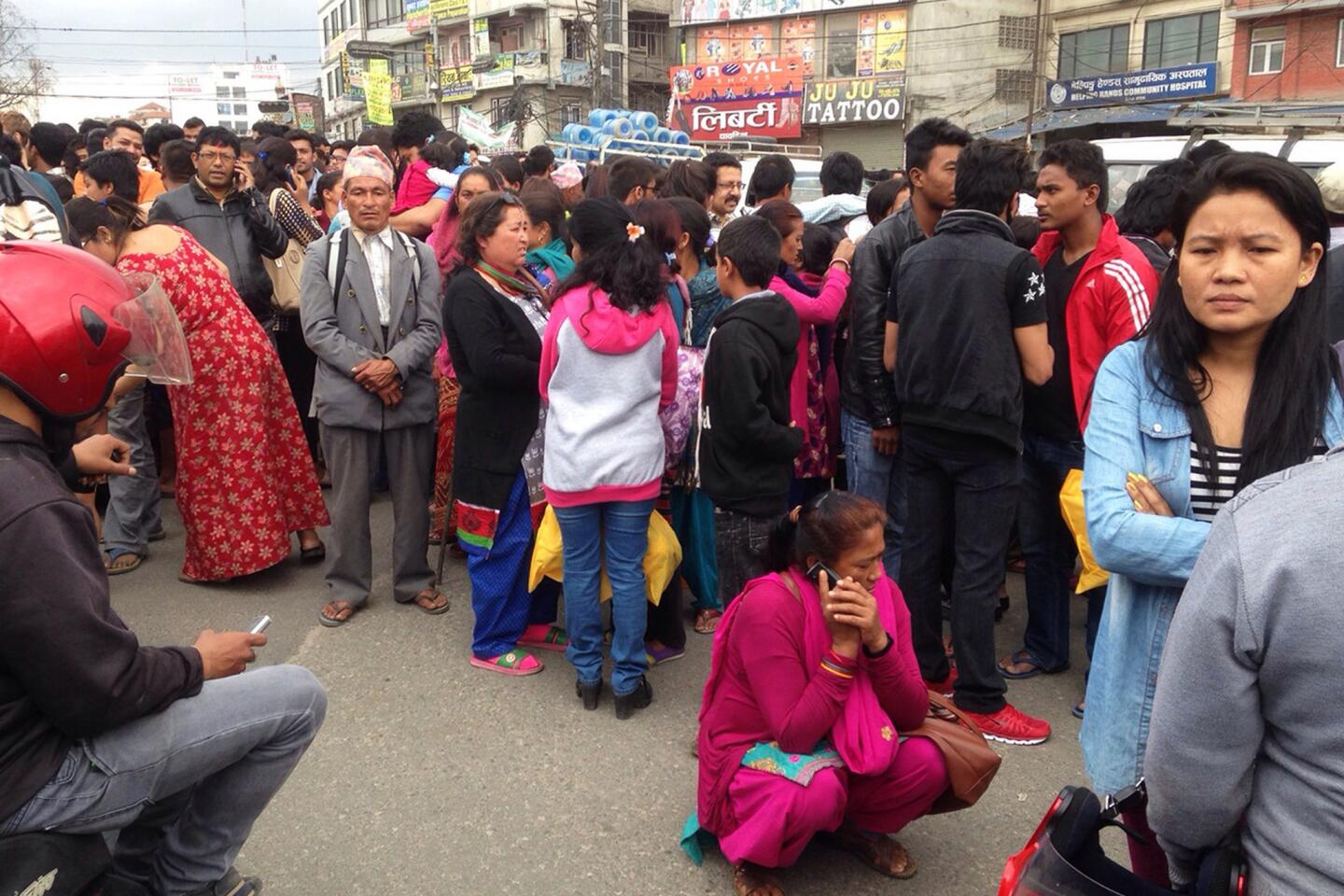U.S. helicopter found; millions need help: Questions about Nepal’s earthquakes answered
Authorities have located the wreckage of a U.S. military helicopter that was on a mission to help with recovery efforts in Nepal nearly three weeks after a crippling earthquake struck the country. The helicopter had been missing for several days. The day it disappeared, a deadly aftershock struck, killing more than 100 people just as some areas were beginning to return to normal. Hundreds of thousands of homes have been destroyed, and millions of people are estimated to need food assistance, the U.N. says. Here’s the latest on the regional devastation, including what you can do to help:
How many people have died so far? Full story
As of May 15, more than 8,200 people had died, according to authorities in Nepal. Nearly 18,000 people were injured in that country alone.
On Mt. Everest, at least 18 people were reported dead and dozens injured in an avalanche triggered by the initial temblor.
In addition, the quake killed at least 69 people in India and 25 people in China’s Tibet region. Additional deaths were reported in Bangladesh.
The May 12 aftershock left at least 117 people dead and more than 2,800 injured, according to authorities in Nepal. The government said the death toll from Tuesday’s quake could increase.
An additional 17 people died in northern India, according to local media.
The number of dead and wounded has continued to rise, as relief teams enter more villages and patients reach medical facilities. Aid workers distributing food and supplies are still struggling to reach more remote areas, some of which don't have cellphone coverage and can be accessed only by foot trails. Some of those roads had been blocked by landslides and the villages can take four to five days to reach, the U.N. says.
How many Americans have died?
Four Americans have been reported dead; all of them were at the base camp on Mt. Everest when the quake struck, State Department officials said.
Thomas Ely Taplin, a filmmaker from Santa Monica, was making a documentary about the base camp when the avalanche hit, his wife, Cory Freyer, told reporters.
Vinh B. Truong, a 48-year-old man from Sunnyvale, Calif., was an avid outdoorsman and was on a trekking tour on Everest when the avalanche hit, his family said.
Also killed was Dan Fredinburg, a Bay Area Google executive described by friends as an avid adventurer who scaled mountains, swam with sharks and, after conquering Mt. Everest, had planned to kite surf across Antarctica.
Marisa Eve Girawong, who was reportedly from Edison, N.J., was working as a camp doctor with the Seattle-based Madison Mountaineering company when the avalanche struck.
On May 15, a Nepalese search team located the wreckage of a UH-1Y Huey helicopter that had been carrying six U.S. Marines and two Nepalese soldiers on an aid mission in a remote area northeast of Katmandu. The Nepalese military reported finding three bodies, and U.S. officials said there are no apparent survivors.
At least three other Americans are missing. Two Seattle women, Bailey Sage Meola and Sydney Jo Schumacher, have not contacted their families since April 19. Their families said this week that the women, both 19 and recent high school graduates, had died in the quake.
According to a list of missing people posted on Facebook, 57-year-old yoga instructor Dawn Habash of Maine is also missing. She was on her fourth trip to Nepal when the earthquake struck. Her daughter, Yasmine Habash, traveled to Nepal to try to search for her mother, the Associated Press reports, until avalanches forced her to evacuate.
Why was the Nepal earthquake so deadly? Full story
A number of factors are believed to have contributed to the high death toll, not least of which is lax seismic standards.
Katmandu Valley is one of the fastest-growing metropolitan areas in South Asia, and many of the people who flocked to the city live in unreinforced masonry buildings. Some two- or three-story buildings have been raised as high as eight stories, increasing the chance they could collapse with major shaking.
A study by Geohazard International found that two-thirds of the region’s structures did not meet Nepal’s own seismic codes. According to a 2013 report by the U.S. Agency for International Development, outside groups had been working with the Nepalese government to shore up seismic safety and building standards, including building more quake-resistant buildings and training engineers.
The first quake was especially deadly because the fault ruptured toward the capital, Katmandu. Also, the area sits on a former lake bed, which makes it particularly vulnerable during a big quake because the loose soil can amplify shaking.
Officials say the earlier quake occurred at a depth of only seven miles, which is relatively shallow in geological terms. Shallower quakes are more destructive.
In 1934, the Nepal-Bihar earthquake, which was centered about 150 miles southeast of the April 25 temblor, caused around 10,600 deaths, destroyed 20% of the Katmandu Valley’s buildings and damaged an additional 40%.
According to the Geohazard International study, an earthquake today that produced shaking consistent with the 1934 quake could kill an estimated 40,000 people and cause “heavy damage” to as many as 60% of buildings in the Katmandu Valley. Studies have shown the Nepal-Bihar earthquake was between an 8.0 and 8.2 in magnitude; the April 25 quake was a magnitude 7.8.
Some buildings that were damaged in last month’s quake collapsed after the May 12 7.3-magnitude aftershock, the U.N. reports.
Have there been any aftershocks?
There have been nearly 100 aftershocks of 2.5 magnitude or greater since April 25, and smaller aftershocks are expected to continue for a month.
Source: U.S. Geological Survey.
The magnitude 7.3 temblor on May 12 was the largest and was centered to the east of Katmandu. Earlier this week, the U.S. Geological Survey said the chances of an aftershock of 7.0-7.8 magnitude or higher was slim; researchers there said there was a less than 1% probability of an earthquake of that size hitting the area this week.

Source: U.S. Geological Survey
A magnitude 6.7 quake also hit the area on April 26.
In newer areas of Katmandu, many buildings had withstood the quake, but residents were too scared to stay inside. Instead, tens of thousands of people set up tent cities in parks, football fields and other open spaces around the city.
After the latest round of shaking, the U.N. reports, there was some panic and more people fled again to open spaces.
What is the situation on Mt. Everest? Full story
The first earthquake caused a massive avalanche on Mt. Everest, which devastated the base camp where climbers and crew usually gather to prepare for their ascent to the summit, or to rest and recuperate.
At least 18 people were killed, and more than 60 others injured, many of them critically, according to officials.
The avalanche damaged the Khumbu Icefall, a key route for the lower part of the Everest ascent, leaving groups of climbers stranded for fear of disrupting unstable ground or sudden shifts in ice that could cause crevasses to open.
As of April 28, the last of the stranded hikers and guides had been airlifted to safety, mountaineering groups reported. According to the Associated Press, climbers and guide companies declared the Everest climbing season officially over after hikers on the Nepal side of the mountain were evacuated.
What is the situation in the area?
Search and rescue teams have again been called out to look for people who have been killed or injured in the latest aftershock.
Fresh landslides from the latest quake are making access to affected villages difficult, aid workers in Sindhupalchowk district, which was hardest hit by the first quake, said.
In the days after last month’s quake, an estimated 75,000 people camped out in the Katmandu Valley because their homes were damaged or they feared aftershocks. While many families had returned to their homes prior to the latest quake, as of May 11, nearly 42,000 people remained in camps in the Katmandu Valley, the U.N. reports.
Some communities had begun to rebuild their homes with wood, mud, stones and corrugated iron sheets, the U.N. says.
The U.N. estimates that more than 3.5 million people need food assistance, and have prioritized 1.4 million to receive immediate food aid.
Food distributions have reached 1.2 million people, the U.N. reports.
At least 26 of Nepal’s hospitals were damaged, according to the U.N., including some of of Katmandu’s major hospitals. An additional 900 village health facilities outside the Katmandu Valley are non-functional, the agency says.
While many businesses in Katmandu had reopened a week after the quake, the U.N. says that nearly 1 million children won’t be able to return to school unless officials can quickly survey schools in the affected areas and provide temporary places for them to learn.
How much estimated damage did the quake cause?
The U.S. Geological Survey has said its models indicate damage from the quake could amount to as much as half of Nepal’s gross domestic product, or about $10 billion. According to the World Bank, Nepal’s GDP is $19.2 billion, and the country has one of the lowest per capita GDPs in the world.
Many historic buildings in the Katmandu Valley, which includes UNESCO-designated heritage sites, have also been damaged or destroyed, including Patan Durbar Square.
More than 280,000 homes were completely destroyed, and another 250,000 were partially damaged, the U.N. reported, citing figures from the Nepalese government.
Signature buildings in the ancient Old Katmandu quarter, including the Dharahara Tower built in 1832, also collapsed.
What international aid is being sent?
Aid from more than 20 countries has poured into Nepal, but the U.N. has said it's not enough. Within three weeks of the quake, countries had donated $168 million for emergency aid, less than 40% of the $423 million the U.N. says is needed.
The U.S. is providing $10 million for earthquake relief efforts, Secretary of State John F. Kerry announced.
.@JohnKerry: US will provide additional $9 million for #NepalQuake response & recovery efforts. https://t.co/2oxTcUlo8o
— Department of State (@StateDept) April 27, 2015A 130-member disaster response team from the United States arrived April 28, including 57 Los Angeles County firefighters and another from Fairfax, Va., who were deployed to help with search and rescue. Over the weekend, U.S. officials also announced they were sending more than 140 troops to offer assistance, along with heavy equipment and several helicopters.
How you can help Full story
Aid groups are sending crucial medical supplies, food, water and shelter materials to survivors. Here are some organizations operating in the country and/or accepting donations toward their relief efforts:
UNICEF: www.unicef.org
Red Cross: www.redcross.org
Mercy Corps: www.mercycorps.org
Save the Children: www.savethechildren.org
Oxfam: www.oxfamamerica.org
Doctors Without Borders: www.doctorswithoutborders.org
CARE: www.care.org
International Medical Corps: internationalmedicalcorps.org
World Food Programme: www.wfp.org
Catholic Relief Services: www.crs.org
Los Angeles Times staff writers Alexandra Zavis, Carol J. Williams, Julie Makinen, Sashank Bengali, Shelby Grad, Abby Sewell, Laura J. Nelson, Sarah Parvini, Matt Hamilton, Matt Pearce and Veronica Rocha contributed to this report. Special correspondent Bhrikuti Rai also contributed to this report.
ALSO:
Survivors struggle with shortages as death toll climbs
Santa Monica-based filmmaker among thousands killed
Tent city springs to life in Katmandu park
For more need-to-know news, follow me @cmaiduc on Twitter.UPDATES
May 15, 2:32 p.m.: This article was updated with the latest death and injury counts, and information about the helicopter wreckage.
May 13, 5:38 p.m.: This article was updated with the latest death and injury counts.
May 13, 10:08 a.m.: This article was updated with the latest death toll and details about the missing U.S. military helicopter.
May 12, 10:23 a.m.: This article was updated with the latest death toll and details about the 7.3 aftershock.
May 5, 12:56 p.m.: This article was updated with the latest death toll and details on the ground.
May 1, 3:36 p.m.: This article was updated with the latest death toll and information on international donations.
April 30, 3:34 p.m.: This article was updated with the latest death toll and additional details from the ground.
April 29, 1:07 p.m.: This article was updated with additional updates from the ground.
April 29, 11:42 a.m.: This article was updated with the latest injury count and additional details from the U.N.
April 29, 9:57 a.m.: This article was updated with the latest death toll and additional details from the U.N. about the situation on the ground.
April 28, 12:02 p.m.: This article was updated with the latest death toll.
April 28, 8:02 a.m.: This article was updated with the latest death toll and number of people affected.
April 27, 3:01 p.m.: This article was updated with information about relief efforts by India and China.
April 27, 2:07 p.m.: This article was updated with the latest death toll.
April 27, 12:36 p.m.: This article was updated with details on how to help quake victims, and on the fourth American fatality.
The first version of this article was published April 27 at 11:18 a.m.
Start your day right
Sign up for Essential California for news, features and recommendations from the L.A. Times and beyond in your inbox six days a week.
You may occasionally receive promotional content from the Los Angeles Times.
